I was recently speaking to a dealer about why the Disco Volante is so appealing, and he pointed out that there's a bit of childhood whimsy captured in the watch. I took him to mean that the shape—a plain circle with hands and no consideration for how a strap should fit anywhere on the watch—was the kind of thing we'd draw as kids. This is that childhood whimsy all grown up: the Furlan Marri Disco Volante Onyx with lab-grown diamonds.
I've written a few times about my growing love of gemsetting (which doesn't seem to get enough respect as an art), but until recently, the idea of owning anything with gems has seemed out of reach. Then, the French-Chinese brand Atelier Wen launched a watch with lab-grown diamond indices, the Ancestra Launch Edition, Jiāo (at a much higher price of $5,850). In that case, I think the lab-grown diamond indices were more of a supporting player for the hand-hammered fumé dial. Before that, the designer at Baltic went slightly viral for a gem-set version of the brand's MR-01 that he showed off in 2023, but it was never for sale. Since that time, I've been waiting for a little affordable moment of bling for myself, and I think I've finally found it.
As I often do, this review will occasionally wander in and out of standard hands-on specs to provide an in-depth look at a variety of historical predecessors. Context is key, but in this case, it will more than prove that this watch is not just an amalgam of an interesting case and diamond indices. For those looking for the quick gist, here it is.
The new Furlan Marri Disco Onyx Diamonds retains most of the specs of the last release. The stainless steel, stepped, round, flying-saucer case (with hidden lugs) measures 38mm by 8.95mm thick, housing a Peseux 7001 manually wound movement with 42 hours of power reserve. The movement bridges have been redesigned by Furlan Marri, featuring hand-finishing including beveling, Côtes de Genève, and graining. The dial is now crafted from natural onyx stone, featuring baguette indices and a double-printed track, and the hands are equipped with Super-LumiNova. Furlan Marri will make 100 of these watches in 2025, with future production to be decided, and will retail them at CHF 3,500.
There's a watch that crosses my mind every single day—actually, two variants of the same watch: the Patek Philippe ref. 5004P with baguette indices. Both early series short hands/short crown and later updated feuille hands and longer split-second chronograph hands came with this rare dial design, as shown in this photo by a noted Japanese collector and owner of the later series. The sportier large crown on the updated ref. 5004P-032 puts it in the top five of my list of favorite watches (yes, I keep track on my phone to see how my preferences change). The use of baguettes at almost all the indices (eschewing gems at 3, 5, 6, 7, and 9) instead of the small square-cut diamonds found on the 3970-style dials gives the impression from afar that the watch is just a 5004P with stick markers. That's a massive part of the charm.
It's primarily because of this association that I first fell for the new Disco Volante Onyx Diamonds when I saw it at Watches and Wonders earlier this year. I verbally placed my order that very day. However, there's a deeper historical context to the use of diamond indices, which gained popularity in the 20th century, as illustrated by the following examples. From dress watches to complications (like the 5170P) and more recent inclusions on sports watches (like the "Tombstone" 40th Anniversary Nautilus ref. 5711P), the baguette has found its place on every style of Patek dial, doing so gracefully.
Patek Philippe ref. 5004P-032. Originally sold in 2008, and appearing at auction that same year. Photo courtesy Antiquorum.
A Patek Philippe ref. 96 in platinum with diamond indices. Photo courtesy LoupeThis.
Patek Philippe ref. 600/1R featuring a miniature enamel of King Saud Bin Abdulaziz al Saud, made and sold in 1956. Photo courtesy Collectability.
Malaika has a great article on the recent rise of baguette setting and some of the history (in addition to the Pateks shown above). Then there's the elephant in the room, or rather the elephant in the watchmaking world over the past few years. Rexhep Rexhepi has become the closest thing to a (watch lover's) household name than any singular independent watchmaker in the past 10 years, aside from F.P. Journe. But Rexhepi has an eye for the historic in a different way than Journe; his Chronomètre Contemporain series has an eye glancing more toward the Vichet-style cases of Patek Philippe, with dials (in both black and ivory grand feu enamel) drawing some inspiration from the same brand.
Last year, Rexhep Rexhepi announced the second of two limited-run versions of the Chronomètre Contemporain II with precious gem indices. But both are based on earlier historical designs.
The Furlan Marri has teased this new release, subtly but consistently, over the past few months. One critique I heard a few times is that people felt it was a copy of Rexhep's work, but I think that's a bit nonsensical. Yes, the similarities are there, but we're talking about two vastly different approaches to watchmaking that both are drawing from the same historic playbook. We've seen that no one "owns" the idea of gem indices—the Patek ref. 5170P is yet another example. While I still believe the Chronomètre Contemporain II is possibly the best time-only watch being made today, this might be my new favorite affordable dress watch.
It would be fair to say this watch relies largely on the newly refined, beautiful simplicity of the dial. Simply put, diamond indices on a black or dark dial are so luxurious and subtle that they could be mistaken for faceted metal. They're a secret trick that's mostly meant to feel special solely for you or anyone else you let in on the secret. Combined with the use of onyx instead of the expected black lacquer or enamel, the watch feels a touch more special.
The key to the success of any gem setting is how you use it. A terrible part of the "shrink it and pink it" design movement in watches is that at some point, diamonds seemed to become obligatory indices on any women's watch and were not thoughtfully used. I can't comment on the quality of these lab-grown diamonds—I'm not a gemologist—but they are anything but an afterthought. They stand out nicely on the dial, function well as indices, and add to the overall harmony of the design.
The Furlan Marri Disco Volante was (until this watch) one of two models from the brand I didn't own. The originals were an interesting combination of vintage-inspired case shape with hidden lugs and a dial that almost struck me as more sports watch-like, with rings of lume, multiple sectors, a hashed-out minute track, and some Arabic hour markers. The Audemars Piguet ref. The 5093 Disco Volante is one of my favorite vintage watches, showcasing how simplicity is key in the disco design.
A white gold Audemars Piguet Disco Volante ref. 5093 sold by Amsterdam Vintage Watches, now for sale at Analog:Shift. The market has come down a bit from the €25,000 Amsterdam Vintage got for this piece, so it's that much more attractive. Photo courtesy Amsterdam Vintage Watches.
The removal of any extraneous text, especially the numerals and dial hashes, along with a simplistic, double-printed design, feels more classic and in keeping with the classic Disco Volante idea. That's the rub. Furlan Marri rose to prominence for essentially reissues of the vintage Tasti Tondi in MechaQuartz form, but they've grown beyond the idea of such remakes. Going back to a simpler design might be a step backward, but it's a step toward something visually more substantial and more pleasing to the eye. The dial really plays off light, with its high-gloss surface and diamond indices inverting, dancing, and glistening in the light. It's hard to capture in images, but you can see the dial inversion below.
The dial does have a touch of lume, which is more of a fun addition than anything, but not particularly practical. The shaped hands have a slight glint, similar to the indices, when the light hits them just right, but don't leave enough room for the lume to be of much use on a daily basis. A value add nonetheless.
The watch uses the Peseux 7001 movement, a legendary ultra-thin workhorse that has been dressed up and down over the years by a variety of companies. Nomos essentially launched its brand on the movement. Blancpain used it—heck, so did a few dozen other brands. If you want a deeper look at the Peseux 7001, I'd recommend reading our friends at Monochrome, who did a great deep dive. This, however, is not a standard Peseux like you'd find in a few other recent releases.
While the technical specs remain the same, including the compact 23.73mm by 2.5mm size, 42-hour power reserve, and manual winding, the movement has been extensively reworked by hand. The bridge shapes have been refined and are less geometric, there's anglage and Côtes de Geneve, plus graining and other little accents like polishing around the jewels. It's a value addition from the brand, one that I think might go slightly underappreciated. This is not Rexhepi or even Chopard finishing, but it's the kind of elevation that makes sense when you consider that this is supposed to be a slightly elevated watch.
The base Peseux 7001 in the Baltic Prismic released in 2024, for comparison of finishing.
The bridges on the Furlan Marri-modified Peseux 7001.
A few years ago, I was digging up pictures of the Patek Philippe ref. 2549 "Horn of David" or "Devil's Horn" watches that are arguably the most un-Patek-like Pateks made, aside from the brand's Gilbert Albert-designed pieces. I came across a flying saucer design that was erroneously listed as a 2549, but in fact was a 2550, and I was immediately hooked. It wasn't until last year, when I was in Singapore, that I saw one of these watches. In fact, I saw two, plus another version of the ref. 2549 at the FutureGrail museum. Together, the three illustrated the mid-1950s design language of the casemaker Markowsky and what makes vintage "flying saucer" designs so unique.
A Patek Philippe ref. 2550R (from an owner in Belgium), ref. 2549J, and ref. 2550J (consecutive serial to the other 2550, found in Cuba), from the FutureGrail collection in Singapore. Not for sale at their auctions or sales currently, but they make a great example of varying designs that are achievable in the small case designs and movements. The 2550 featured a Cal. 12-400 movement while the 2549 had a Cal. 10-200. Cases made by Markowsky, like the other 200 or so estimated "Turtle" or "Horn" watches from this era of art and mid-century lug and case design, even with a 33mm size.
For instance, the obvious dominant design quality of the ref. 2549 focuses on the lug shape (which in this example stands apart from the case). On other versions (like Roni Madhvani's black dial), the two are one design element. But I'd argue that it's the way that Markowsky created visual depth while keeping the watch slim (with the Cal. 10-200 movement) that made it so successful. The saucer-style versions of the ref. 2550 are slimmer yet, due to the bracelet being fully integrated into the case. No lugs. Just the saucer. And it wears quite well at 33mm.
The Furlan Marri Disco Onyx Diamonds has a reported thickness just shy of 8.9mm, due in part to the brand's choice to add versatility by having a changeable strap instead of an integrated bracelet. The brand has chosen a more sloping step to the saucer shape, which reduces aggressive straight lines and hard edges. It also sits higher on the wrist due to the location of the hidden lugs and is slightly thicker because of the display caseback. Meanwhile, it maintains a hidden crown, which is (to me) a core design feature for a good flying saucer. I think these are necessary updates for a modern market. Patek is estimated to have only made about 200 of their "Turtle" collection over a period of five years or more. Furlan Marri is trying to sell half that number at once, and it needs to appeal to as many people as possible.
The new herringbone weave mesh bracelet is stunning. It's comfortable and has no burrs (nor did it pull my hair too much), but it can be swapped with the included black calfskin strap. The brand has recently rolled out the bracelet as an add-on for previous buyers and I can see it working well for the Disco Volante. However, by using hidden lugs (with 20mm curved end links), the lug-to-lug width is a compact 32mm. That meant that the standard strap was barely long enough for my 7.25-inch wrist to comfortably tuck the strap keeper into the end. The black strap might feel a bit too stuffy for an already formal watch, so I have already placed an order for a few more strap options from US-based Veblenist. I expect I'll wear it more often on a strap than on the bracelet.
The bracelet end tucks under the rest of the bracelet but doesn't seem to put pressure on the wrist uncomfortably.
A few trusted friends and colleagues have seen this watch in person. It's interesting to me that half of those that I saw thought the watch looked or wore bigger than expected, the other half thought it wore smaller. The 36mm "Red Hunter" launched earlier this year is, on paper, smaller in diameter but looks larger because it has lugs. But regardless of size, everyone seemed to agree that the Disco Onyx is a stunning watch and comfortable to wear. And of course, the beauty really comes out in the sun.
The Disco Onyx Diamonds is a niche choice, to be sure, but it's a special one. After years of wondering if I could be a "bling" guy, I now get to play around with the idea in reality and at a really fair price (again, only CHF 3,500), considering all the little upgrades. As much as I had hoped it would become a new part of my daily rotation, I've learned that between the case shape and those exceptional little diamonds, it's a watch I'll reserve for special occasions. And that’s okay. However, it hasn't necessarily scratched an itch in a way that makes that feeling go away. No, now I look at the rest of the brand's lineup and think: "Why not a Cornes de Vache with diamond indices? What about a chronograph?" The best part is that none of this is outside the realm of possibility anymore, and I'm hoping that more brands take notice.
The Movement
Caliber: Peseux 7001
Functions: Hours, minutes, and subsidiary seconds
Diameter: 23.73
Thickness: 2.50mm
Power Reserve: 42 hours
Winding: Manual
Frequency: 21,600 vph
Jewels: 17
Chronometer Certified: No
Additional Details: Front and back: scratch-proof sapphire crystal with five layers of anti-reflective coating and one anti-fingerprint layer; Movement bridges have been redesigned by Furlan Marri, featuring hand-finishing including beveling, Côtes de Genève, and graining.
The Furlan Marri Disco Onyx Diamonds is available immediately through the Furlan Marri website, the brand's showroom, and select retailers for CHF 3,500 (before tax) and is limited to 100 pieces in 2025, with future production to be determined. For more, click here.
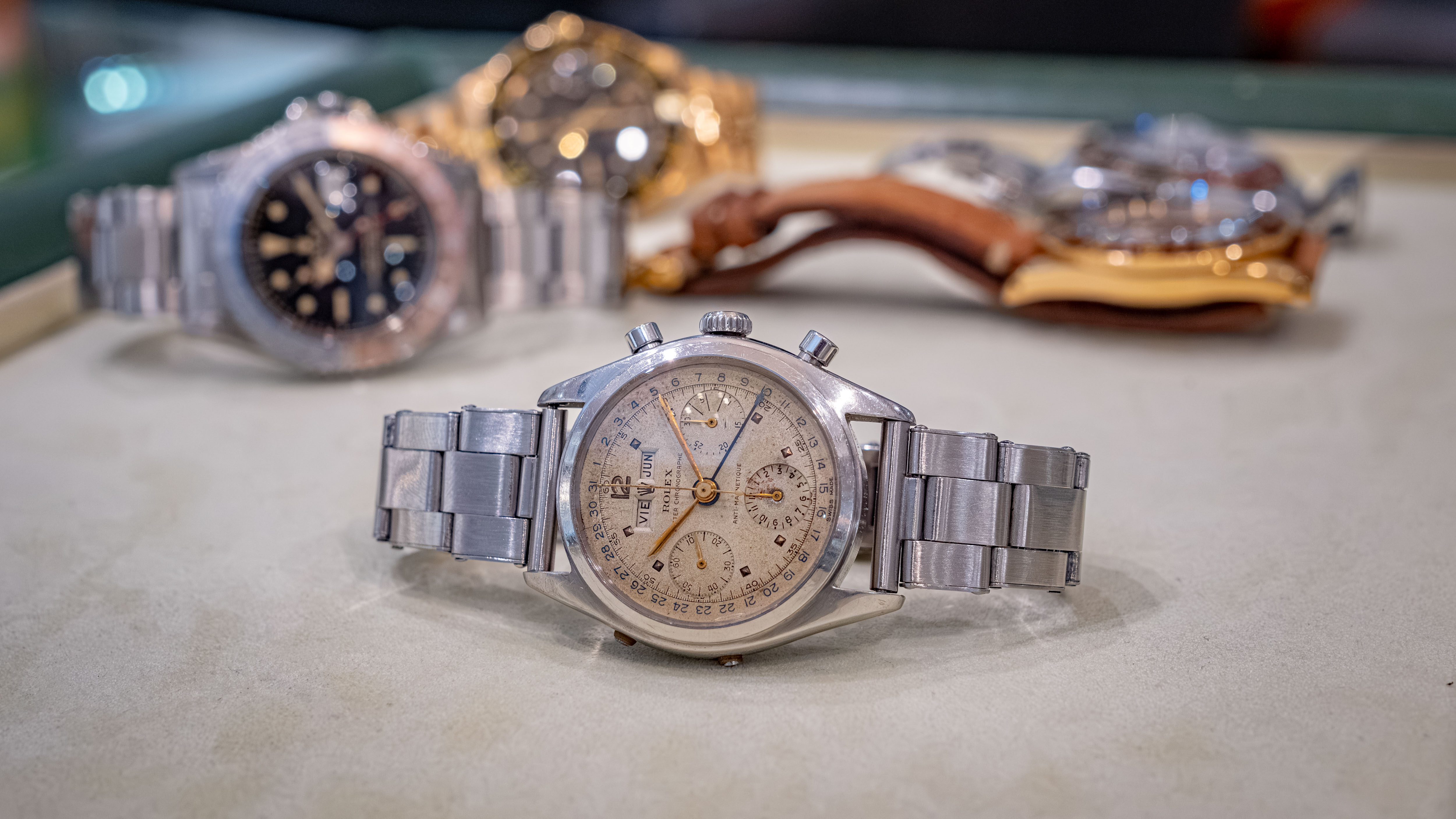


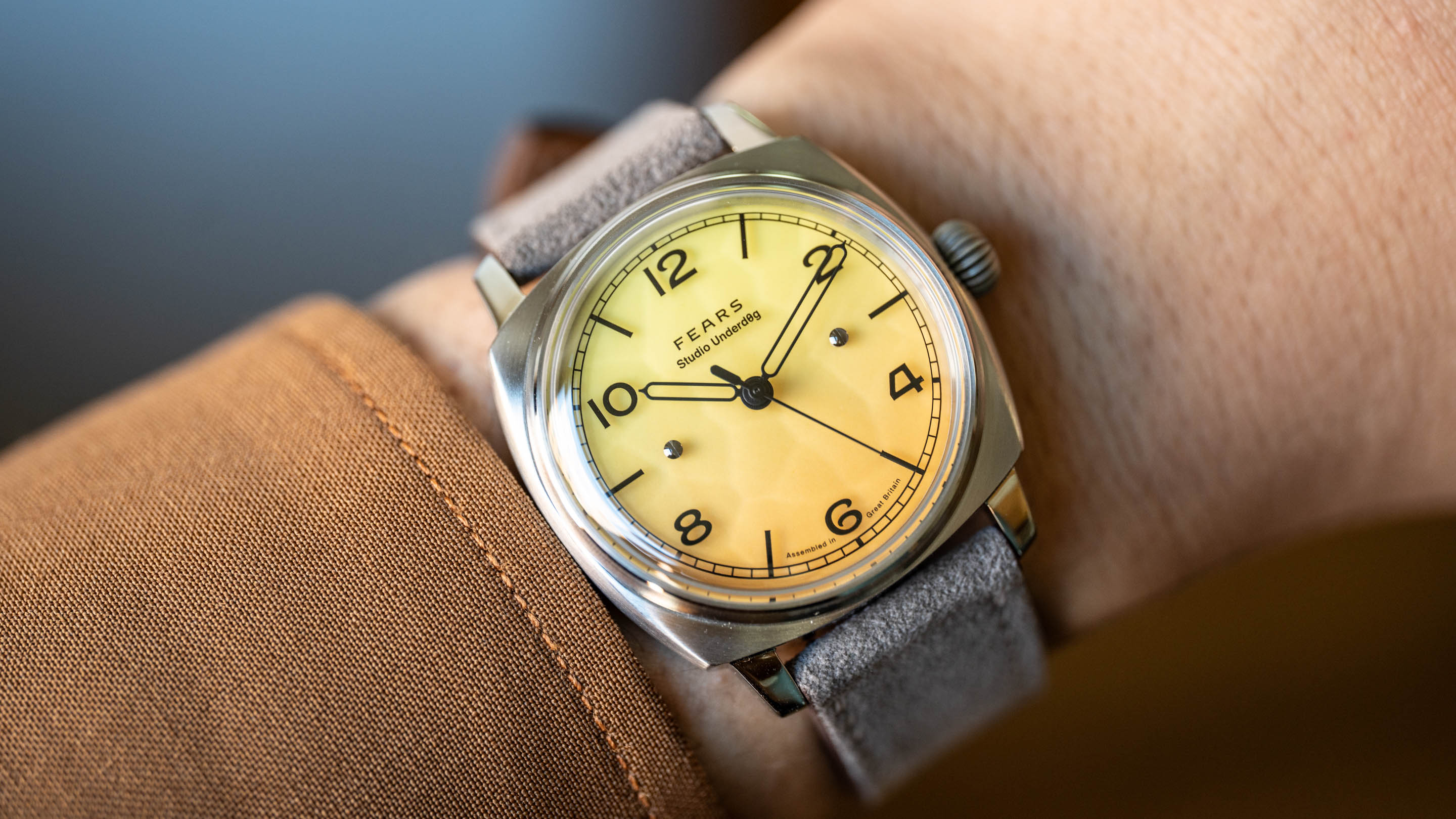



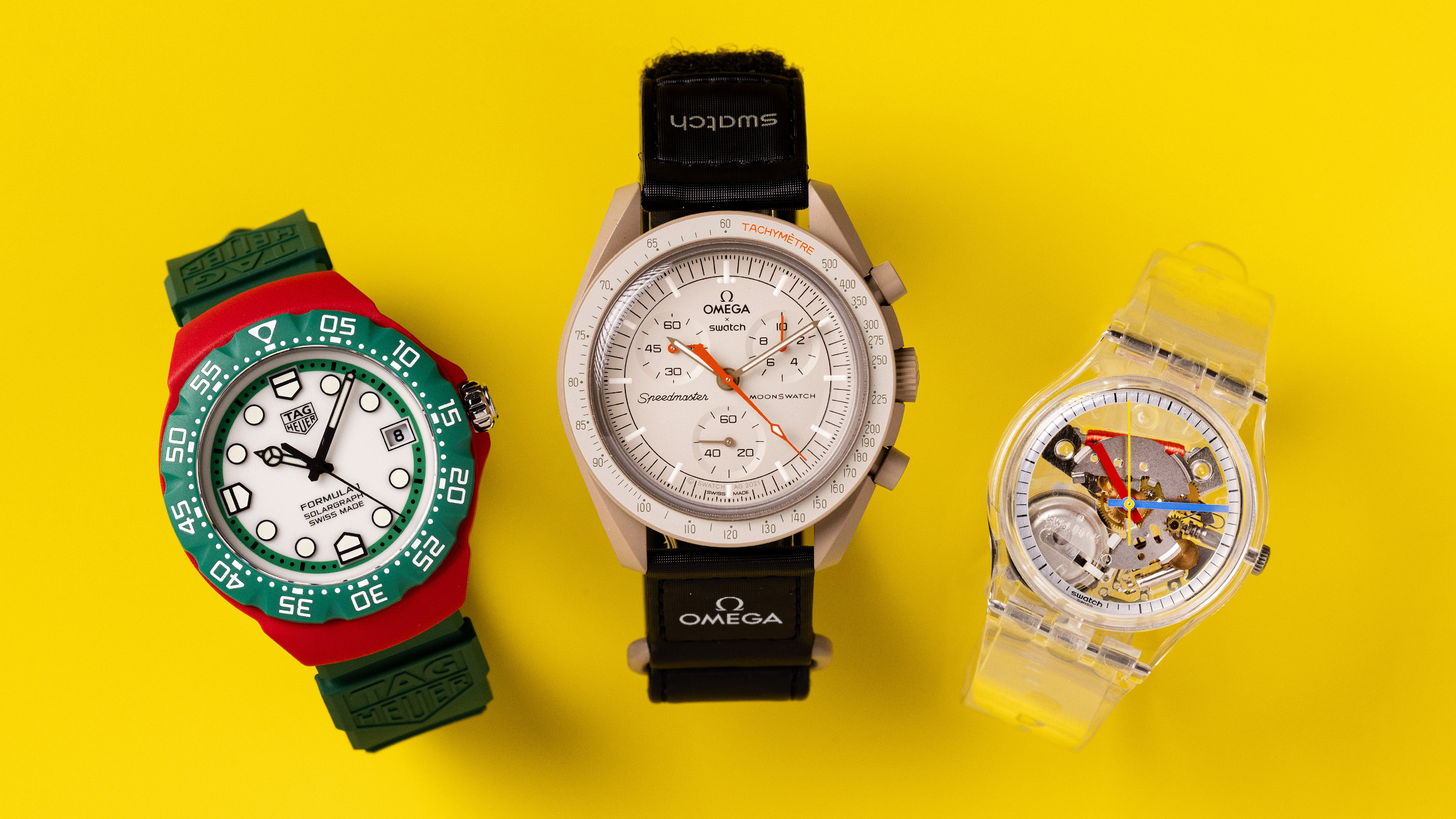
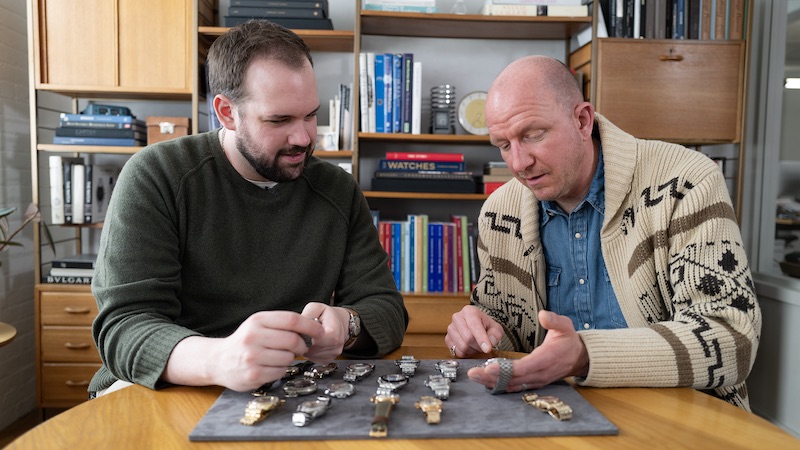


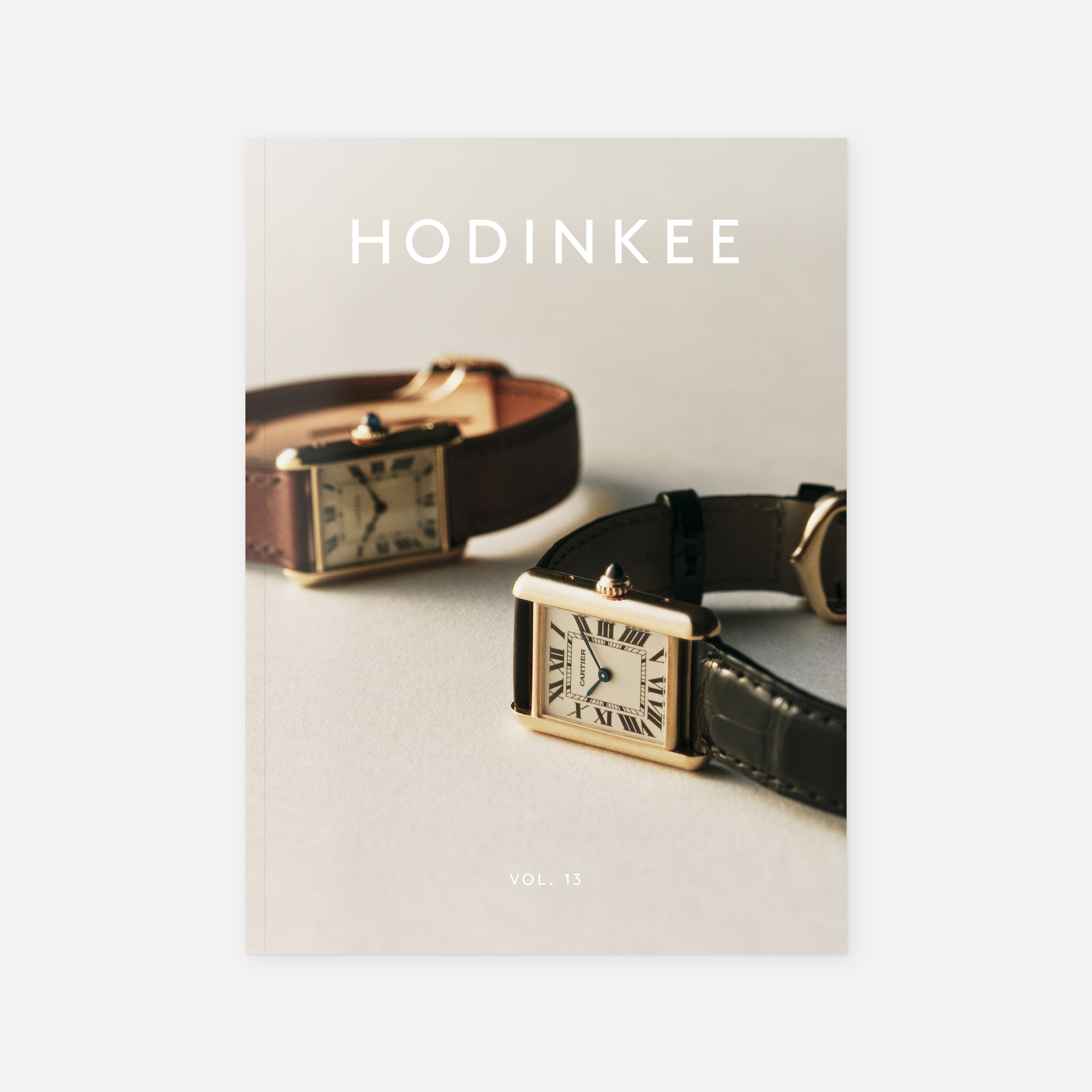
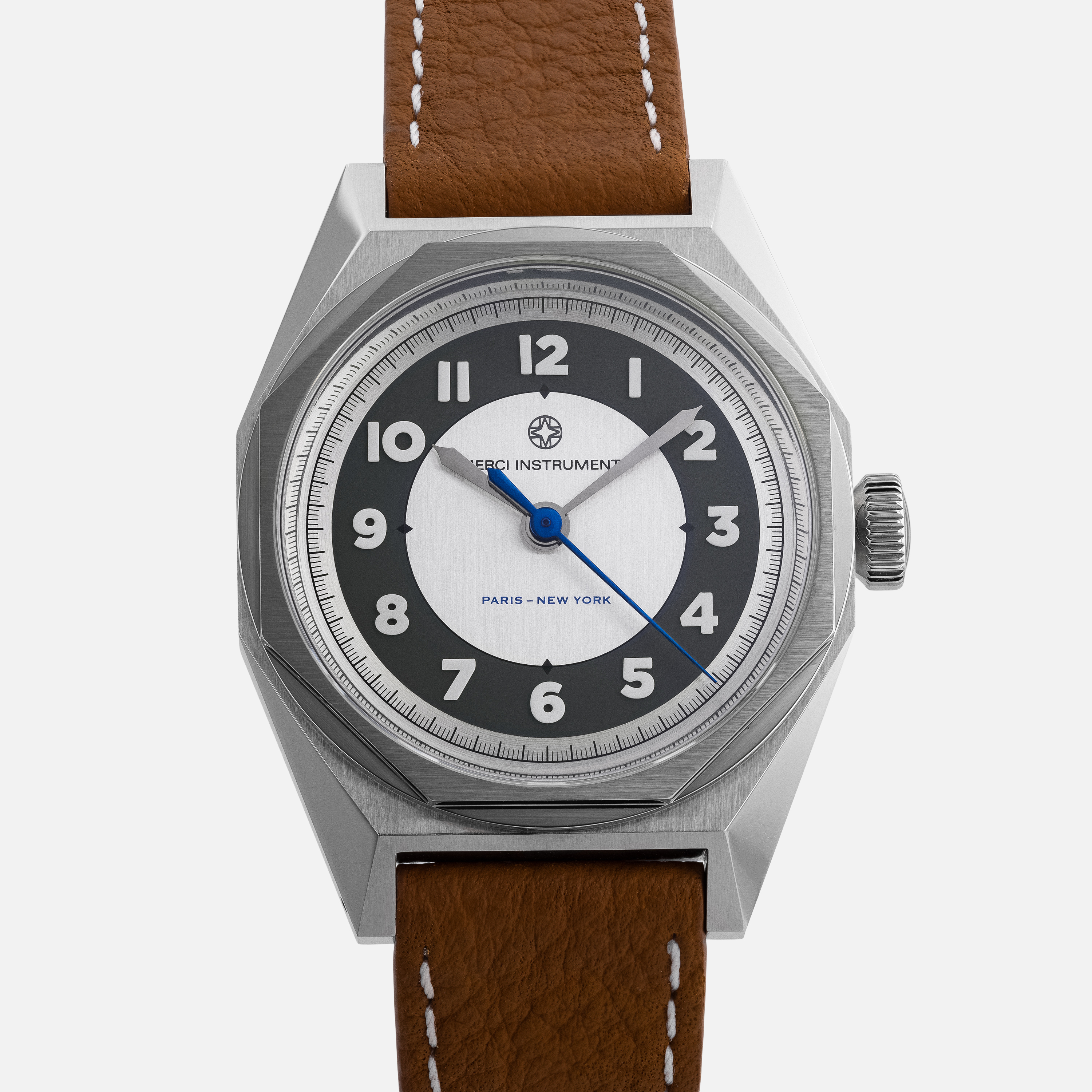
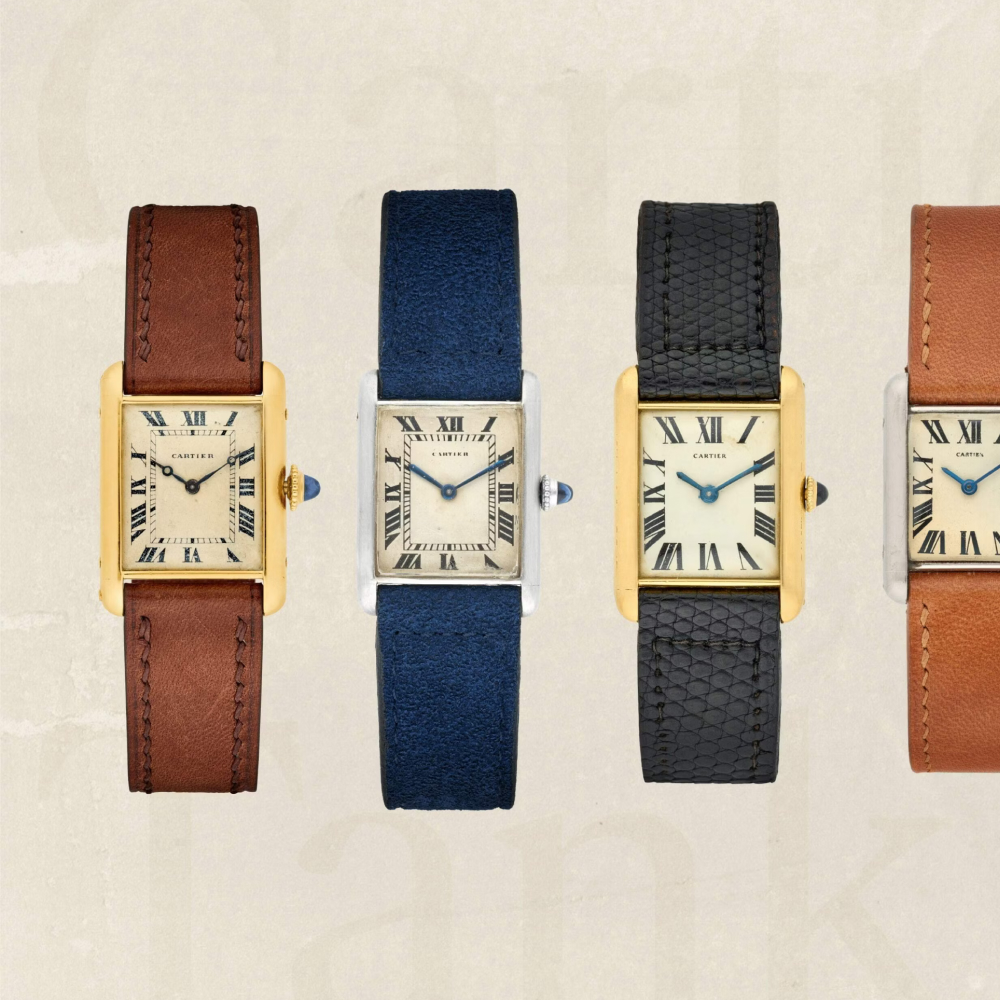




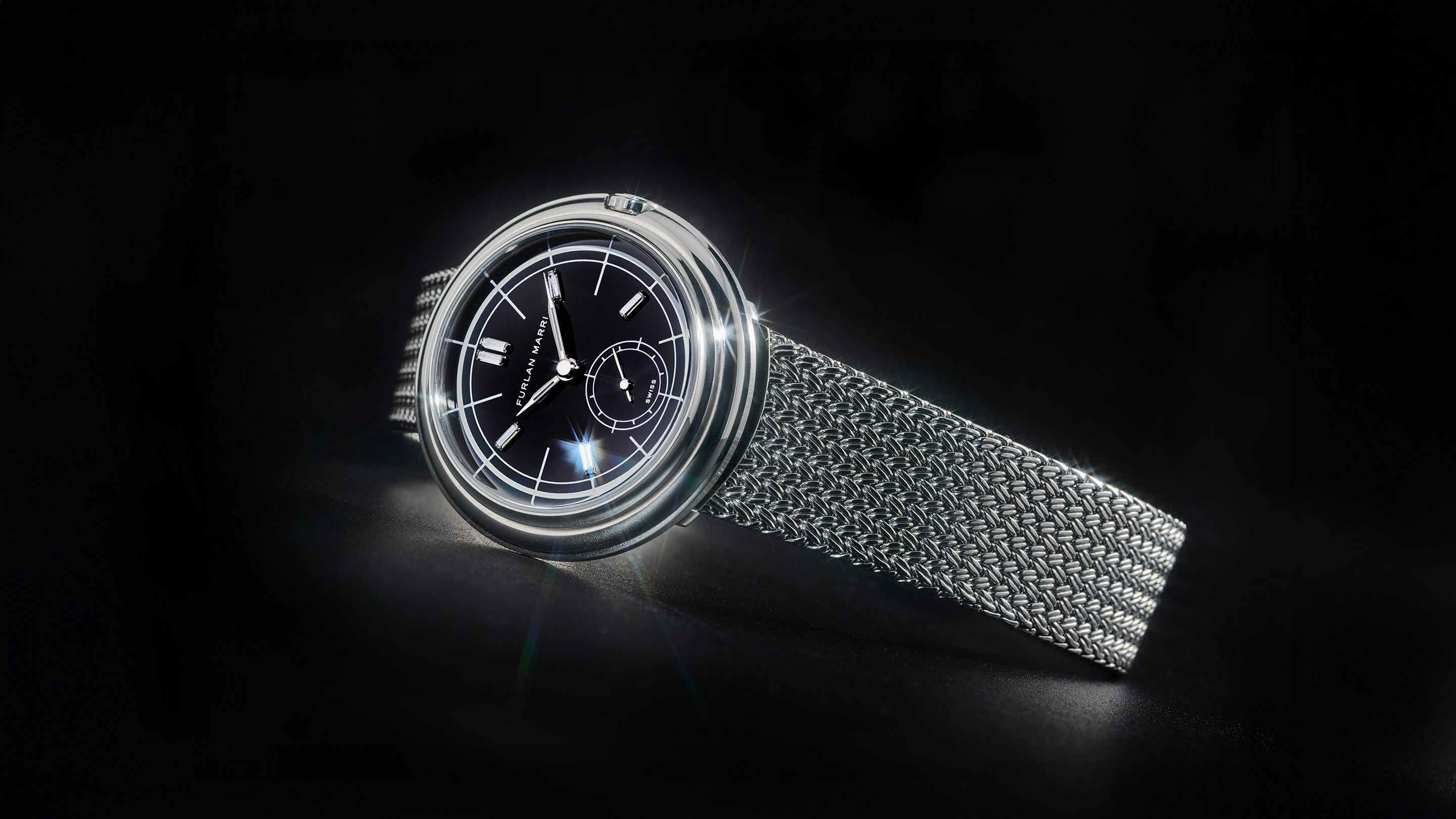



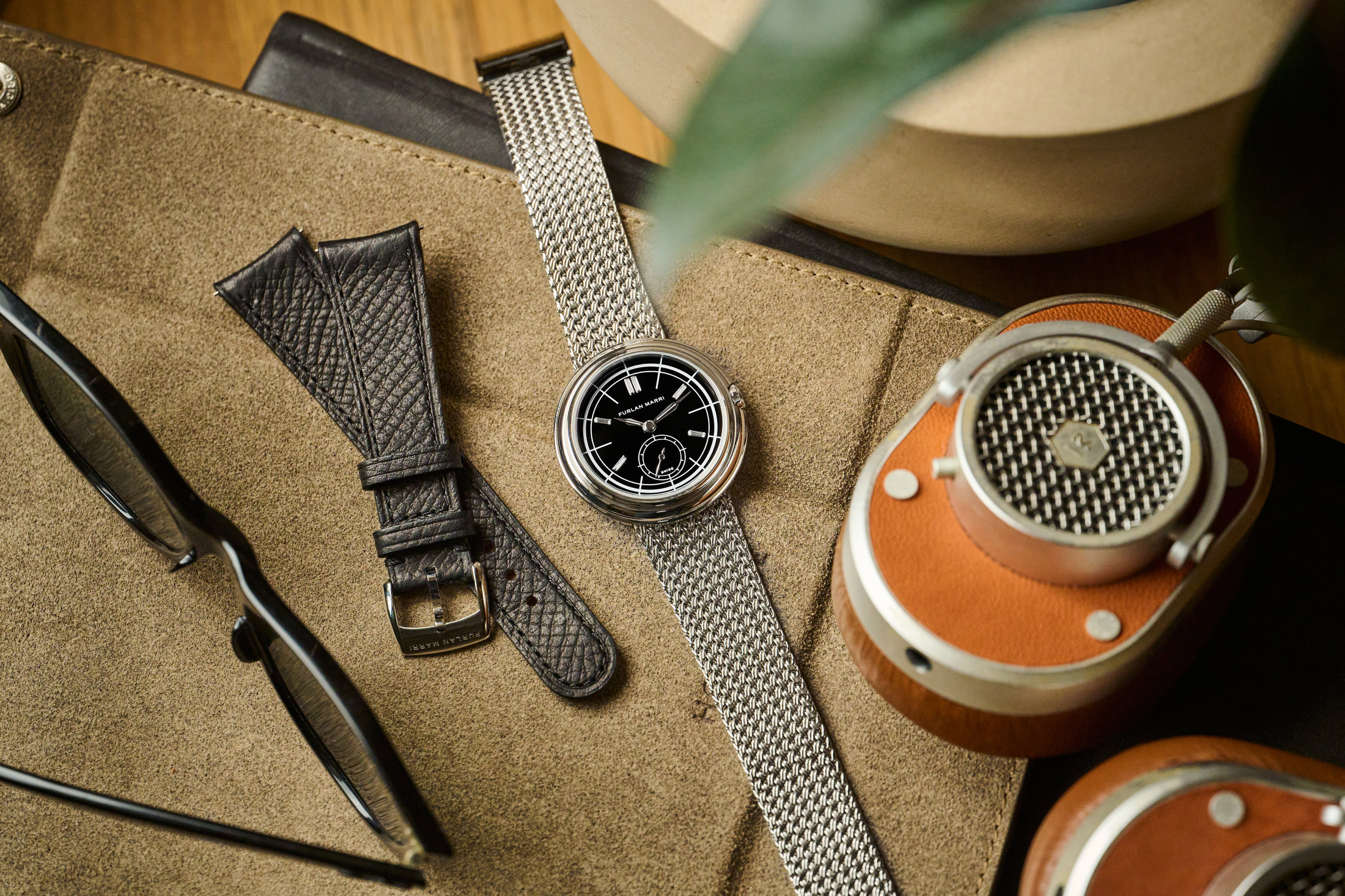
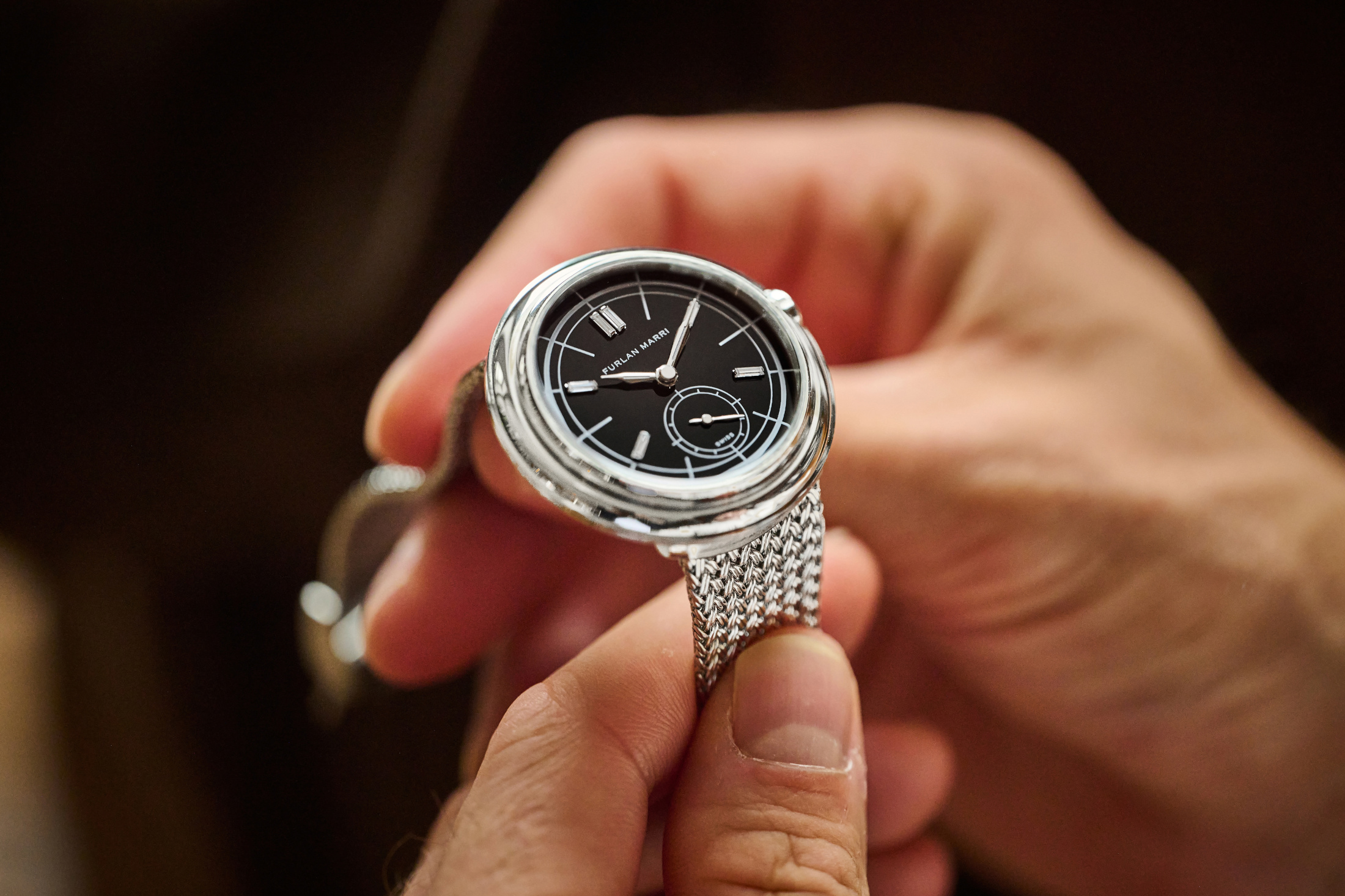

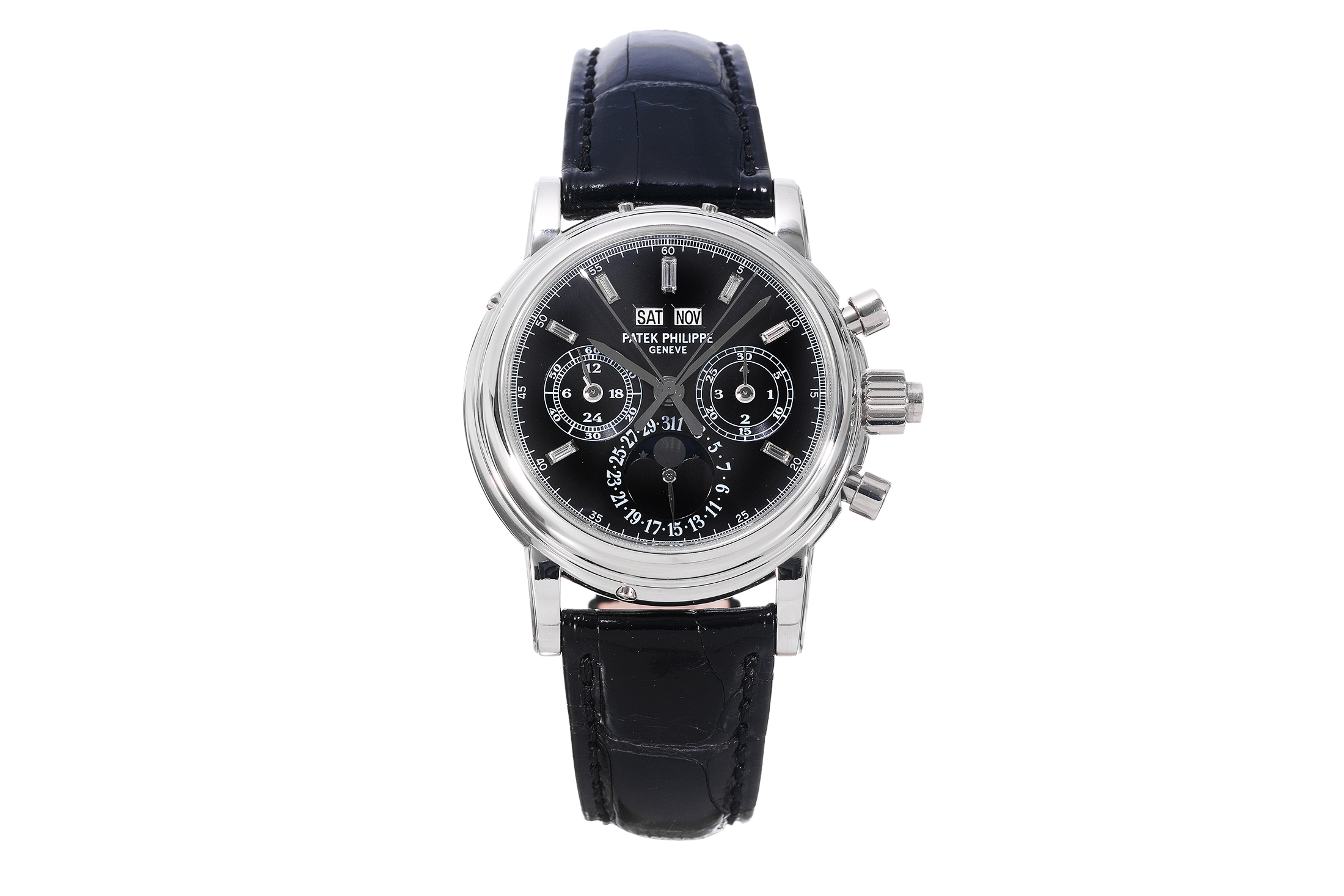
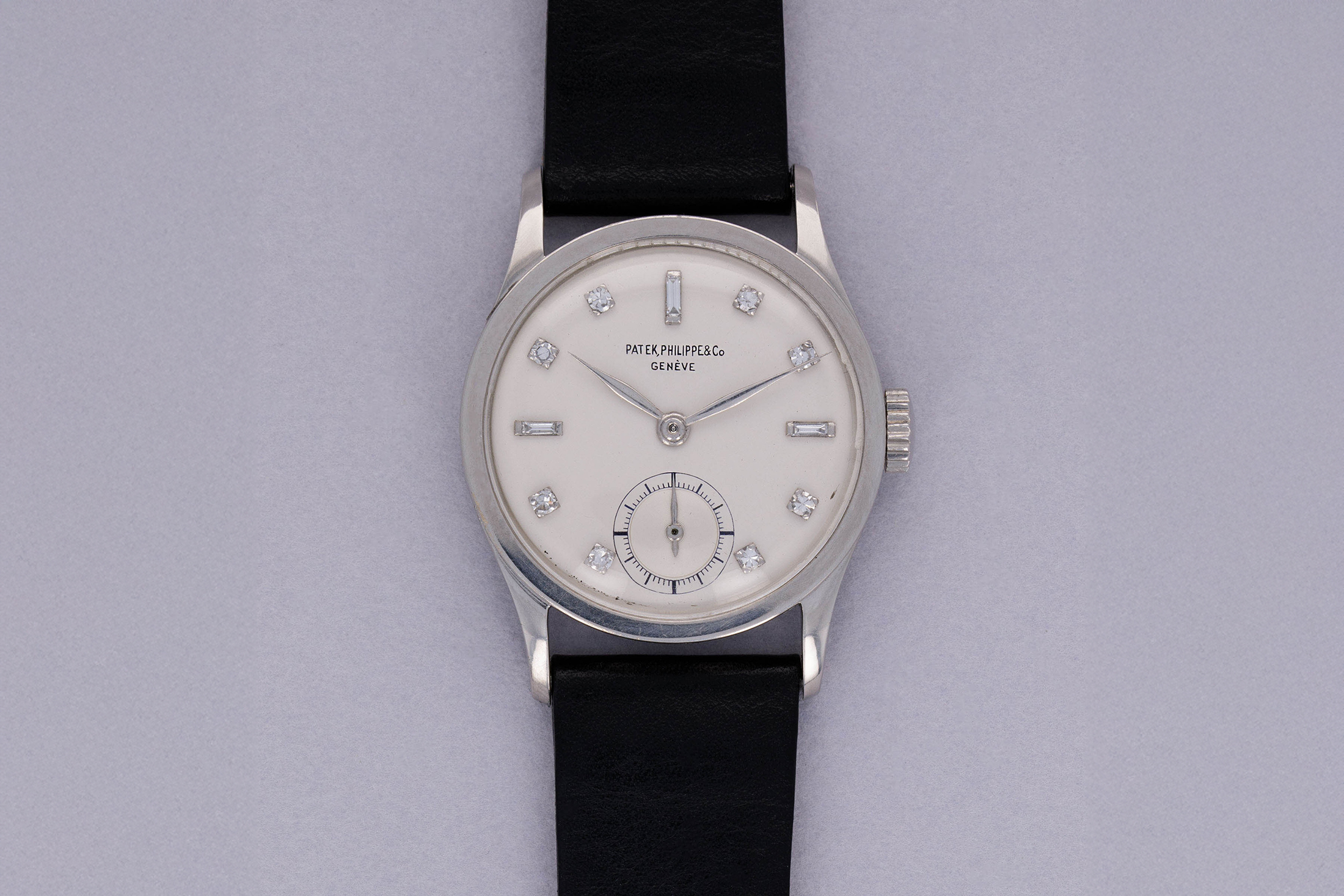
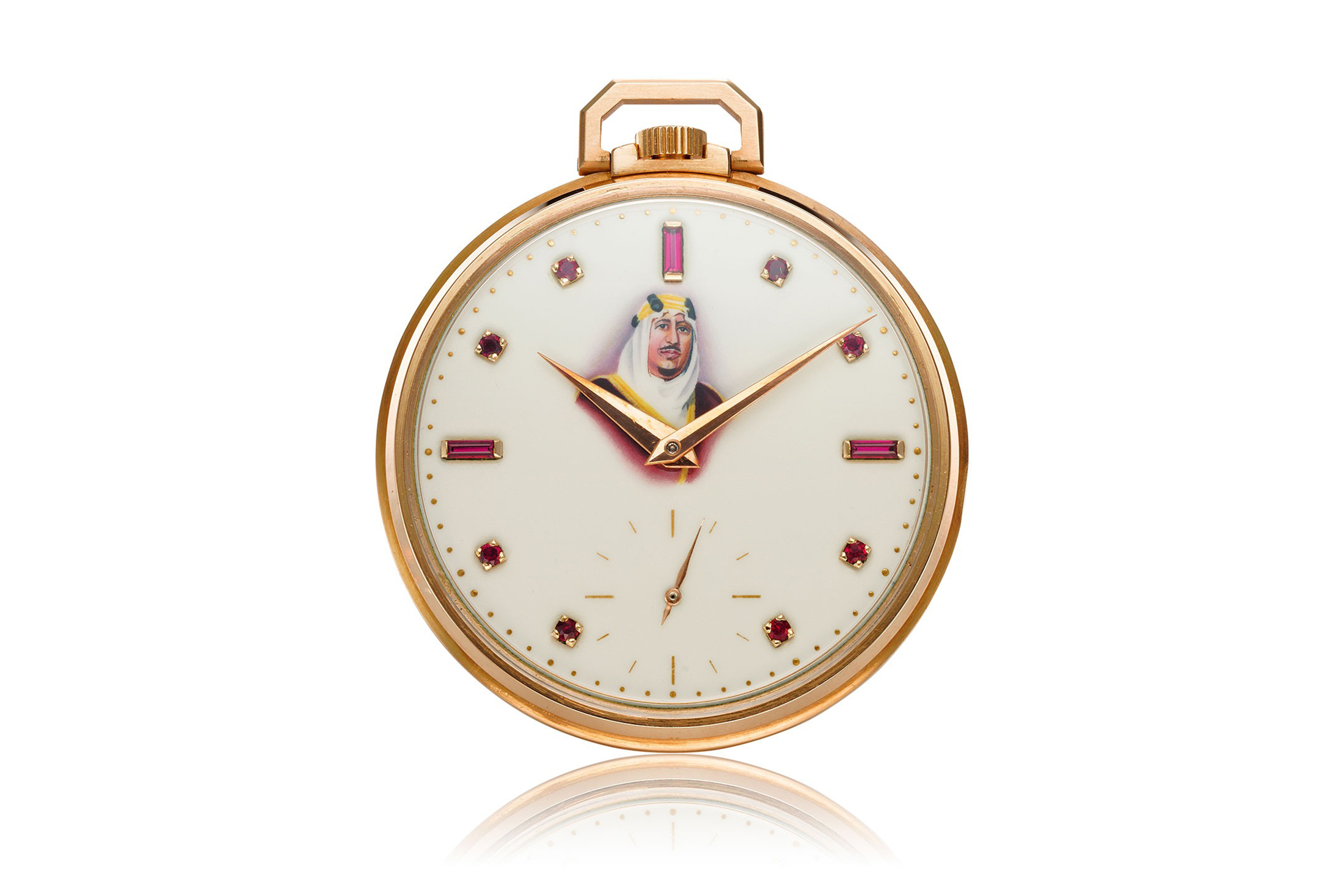

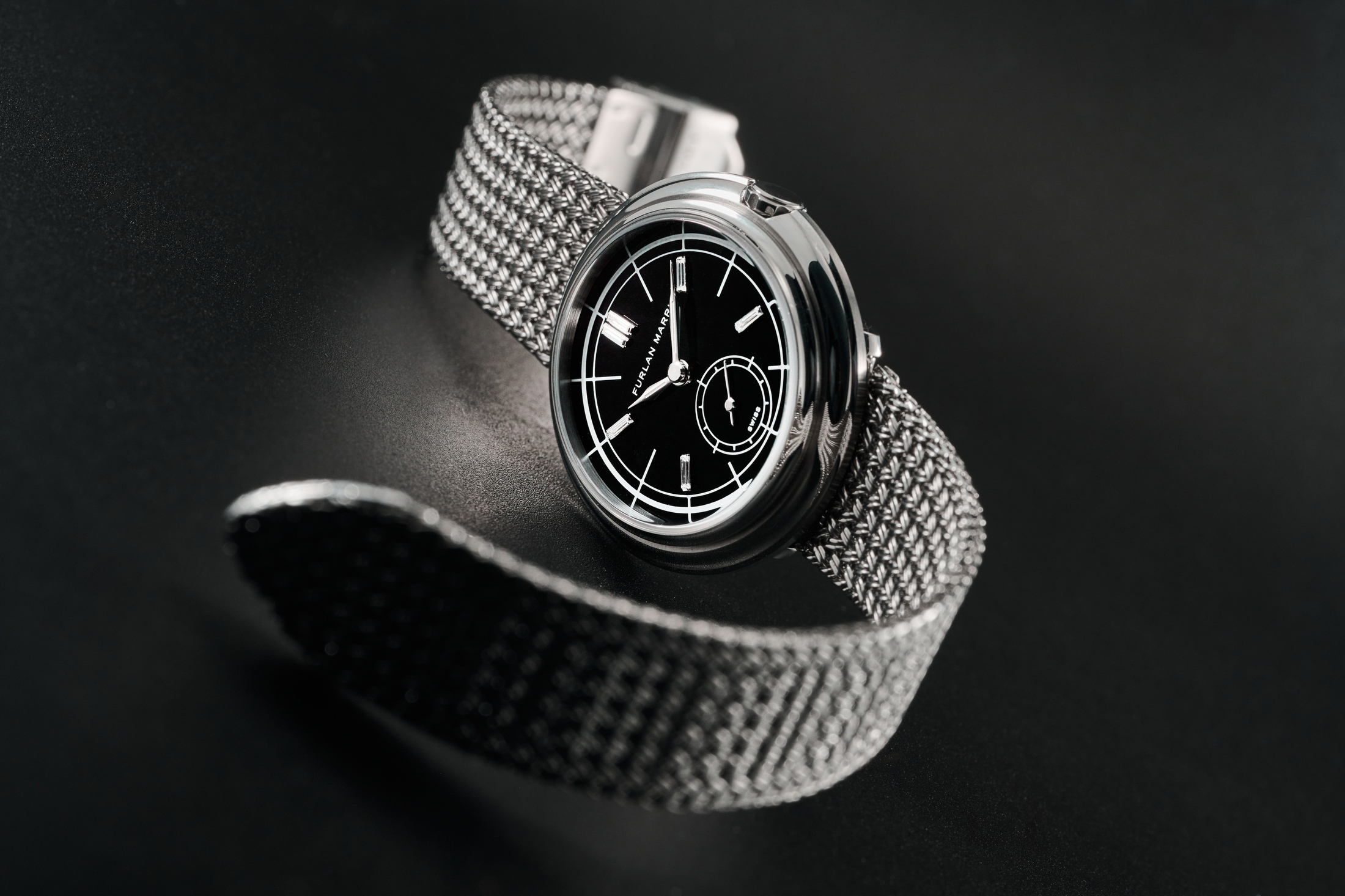
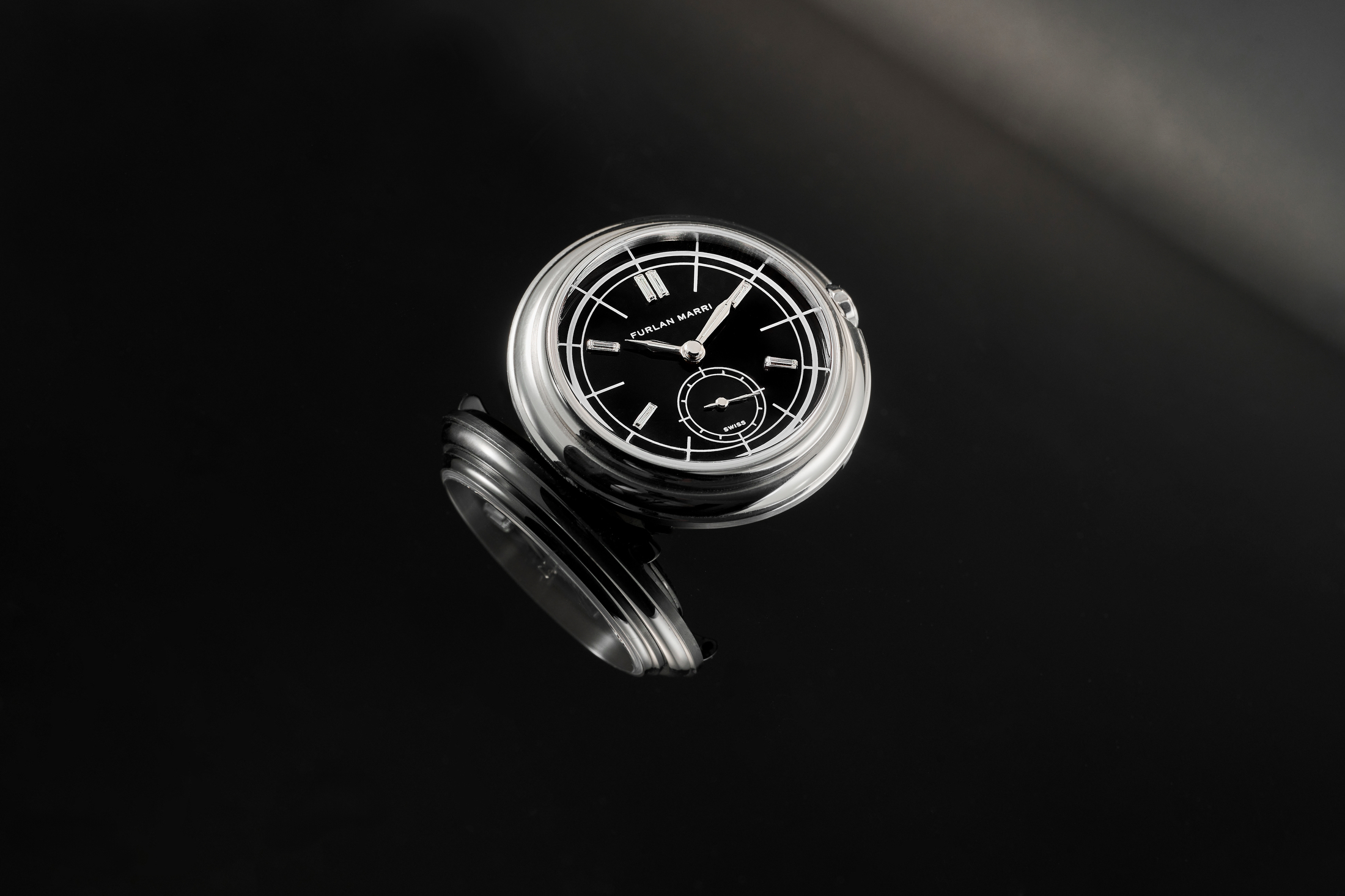
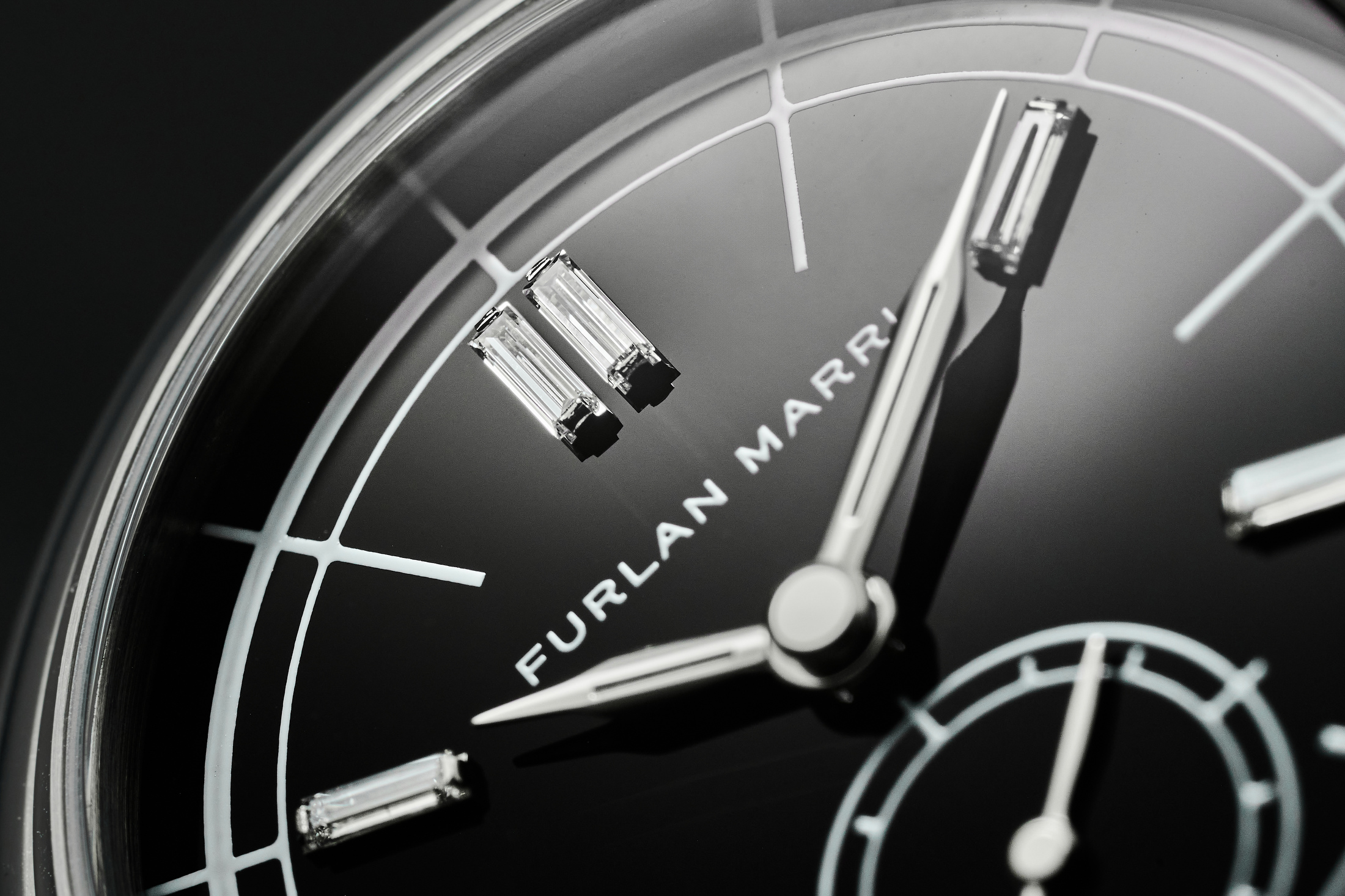

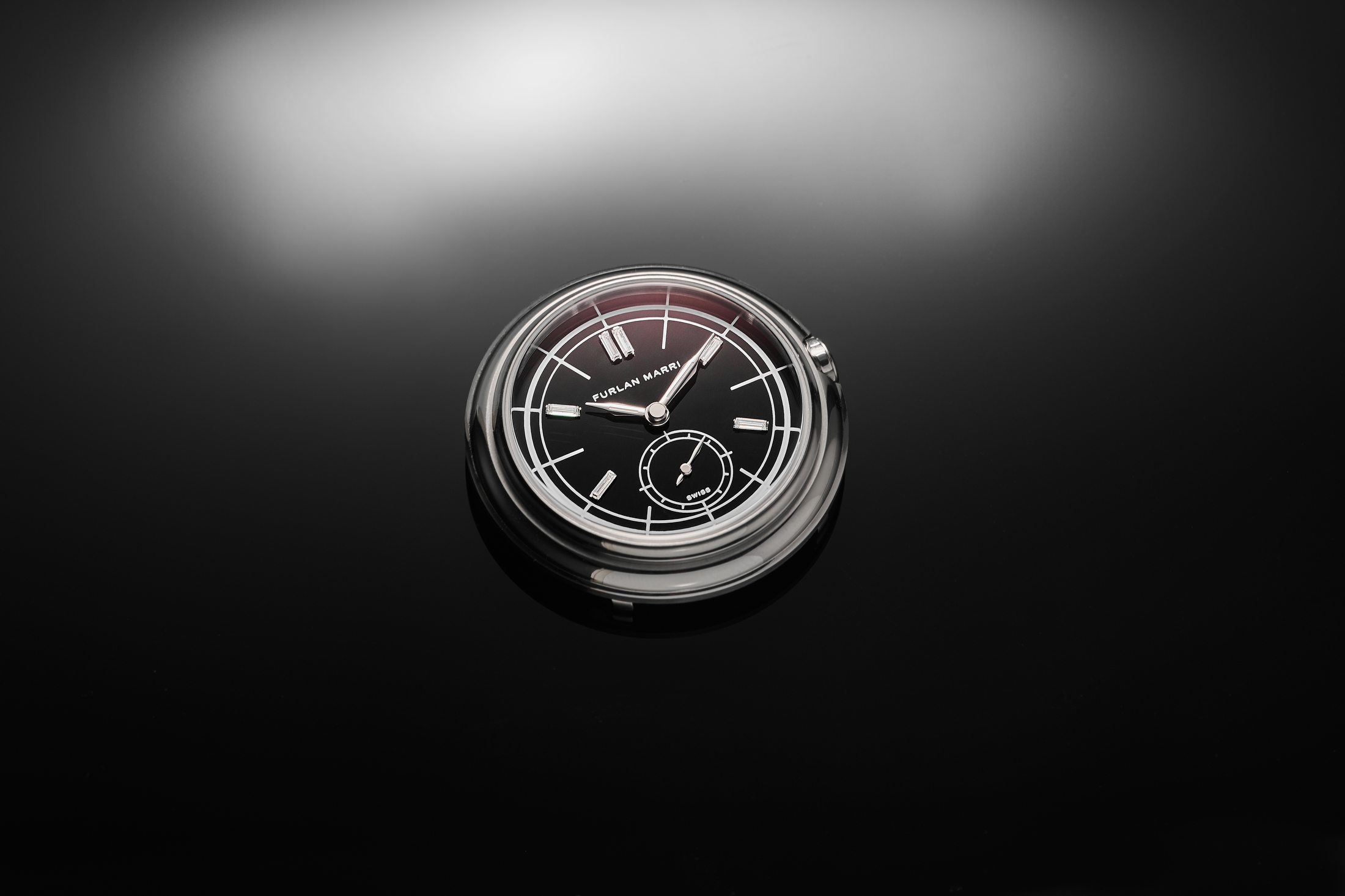
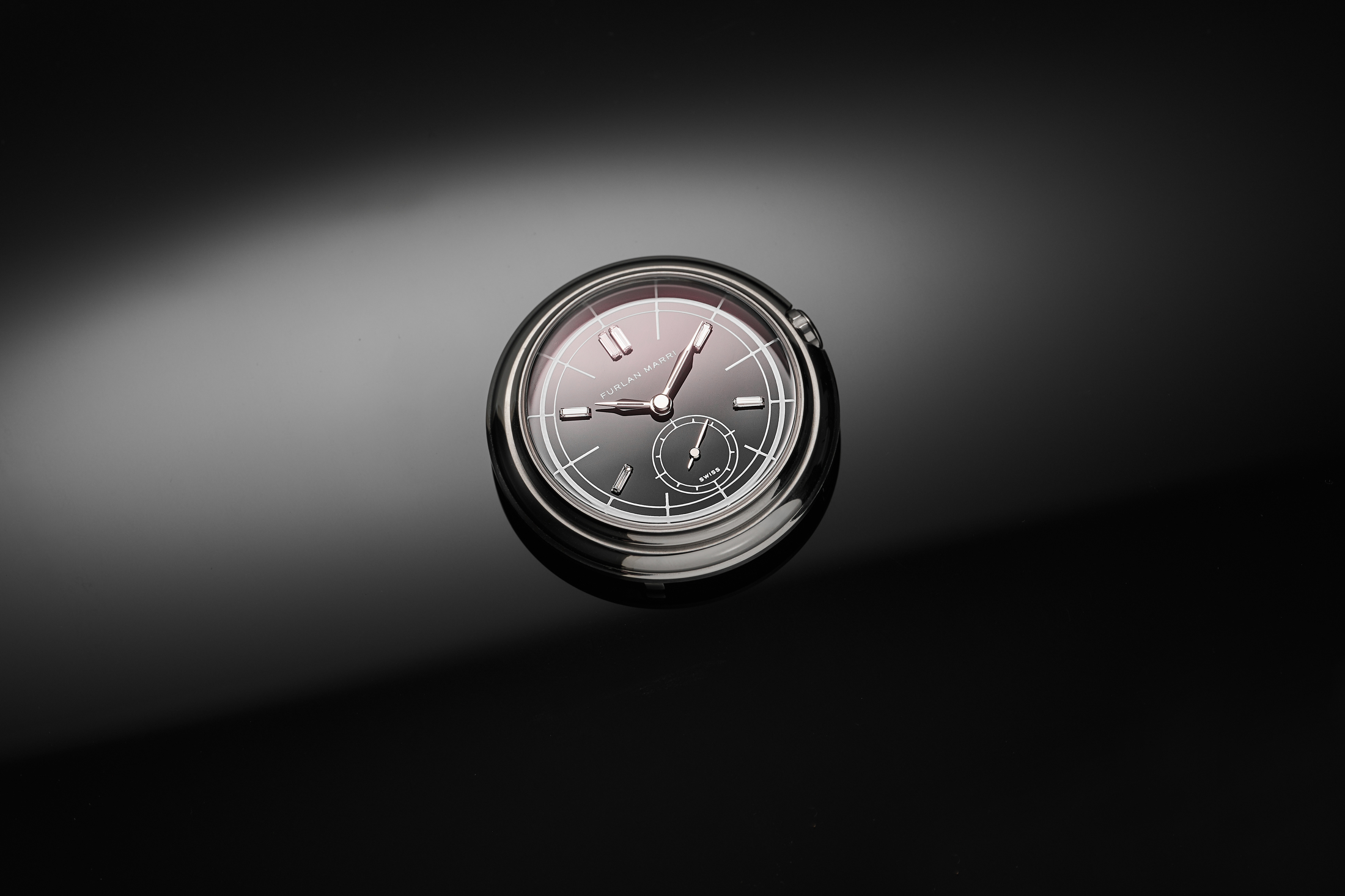
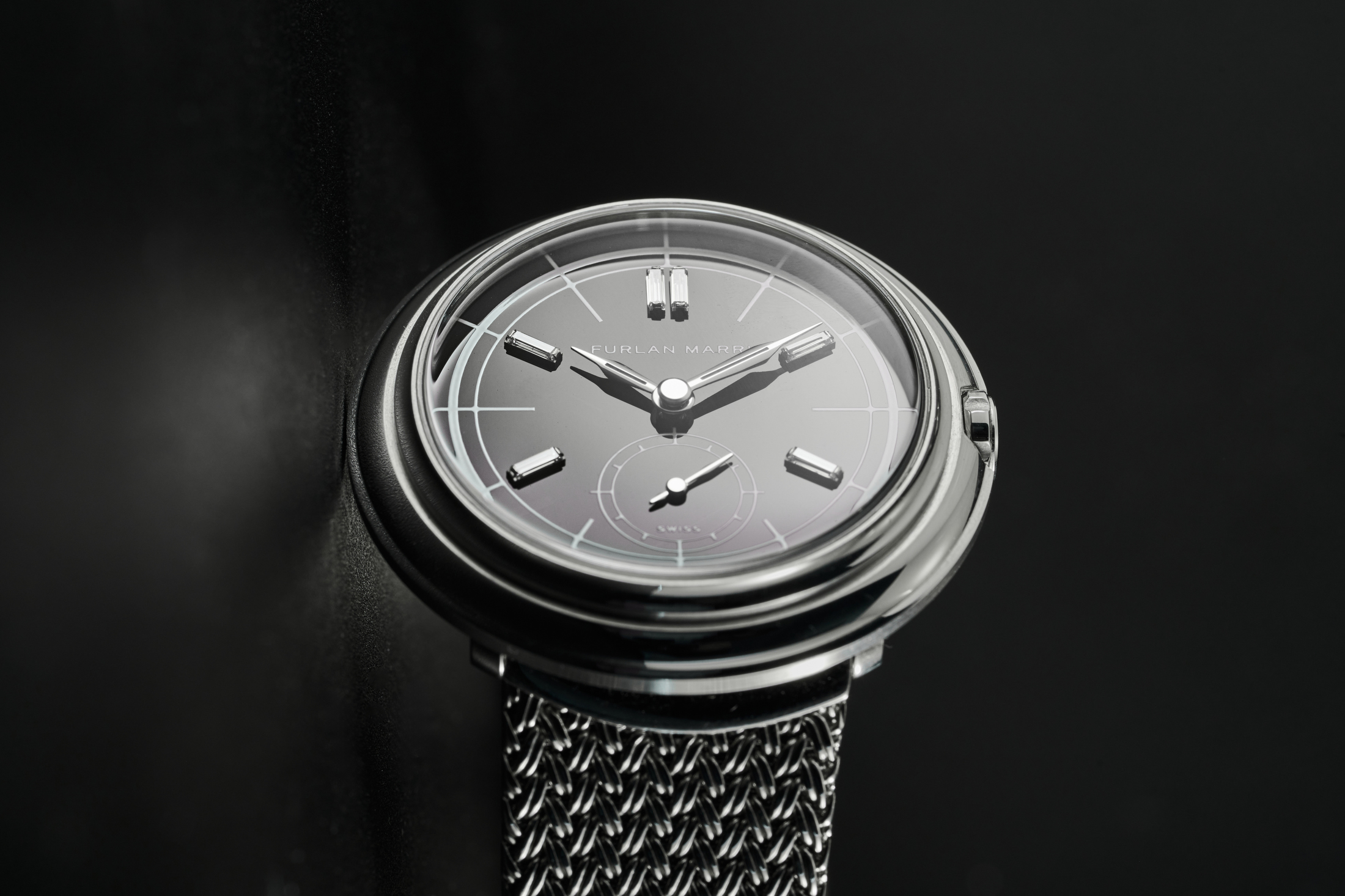
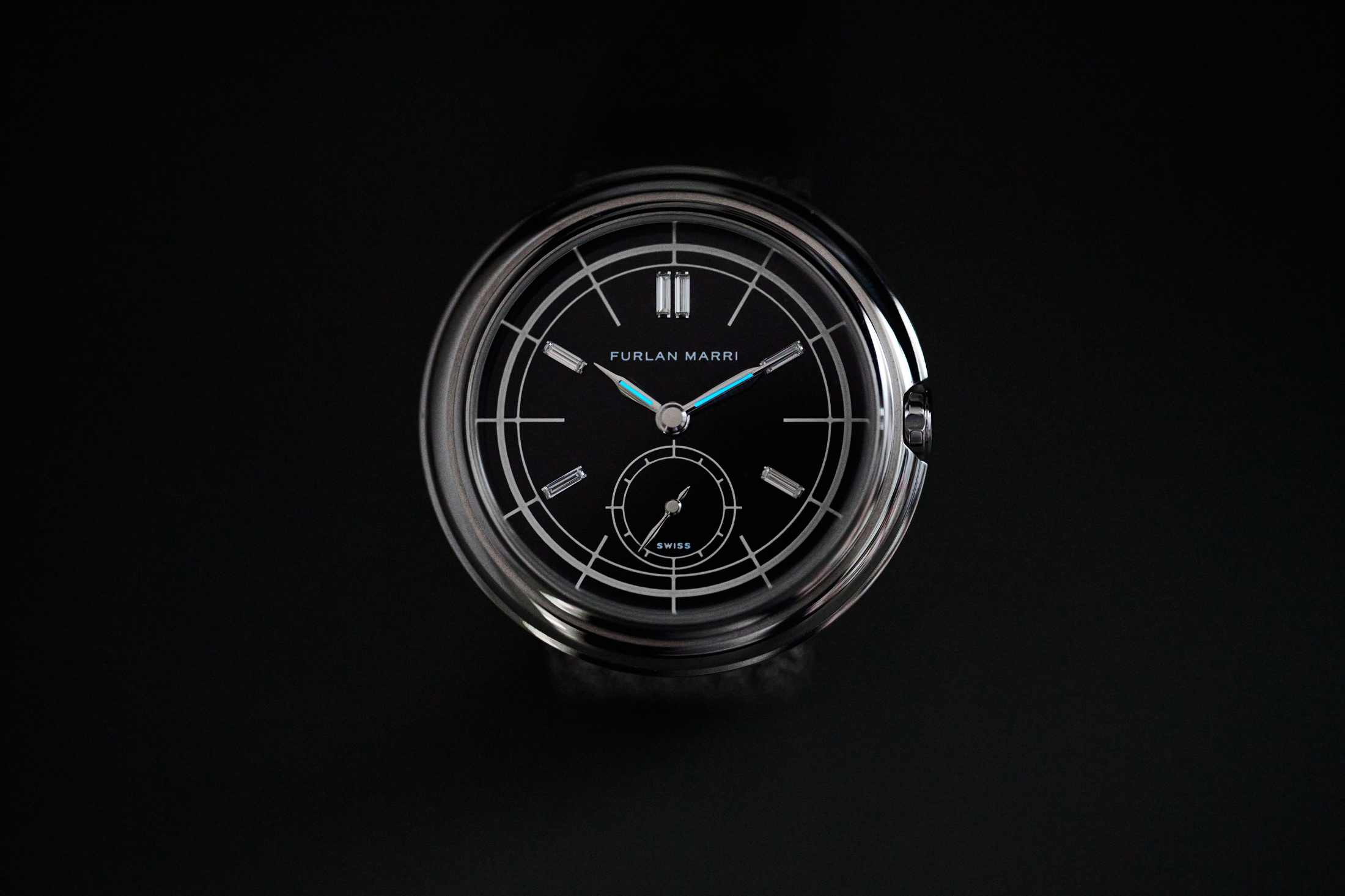
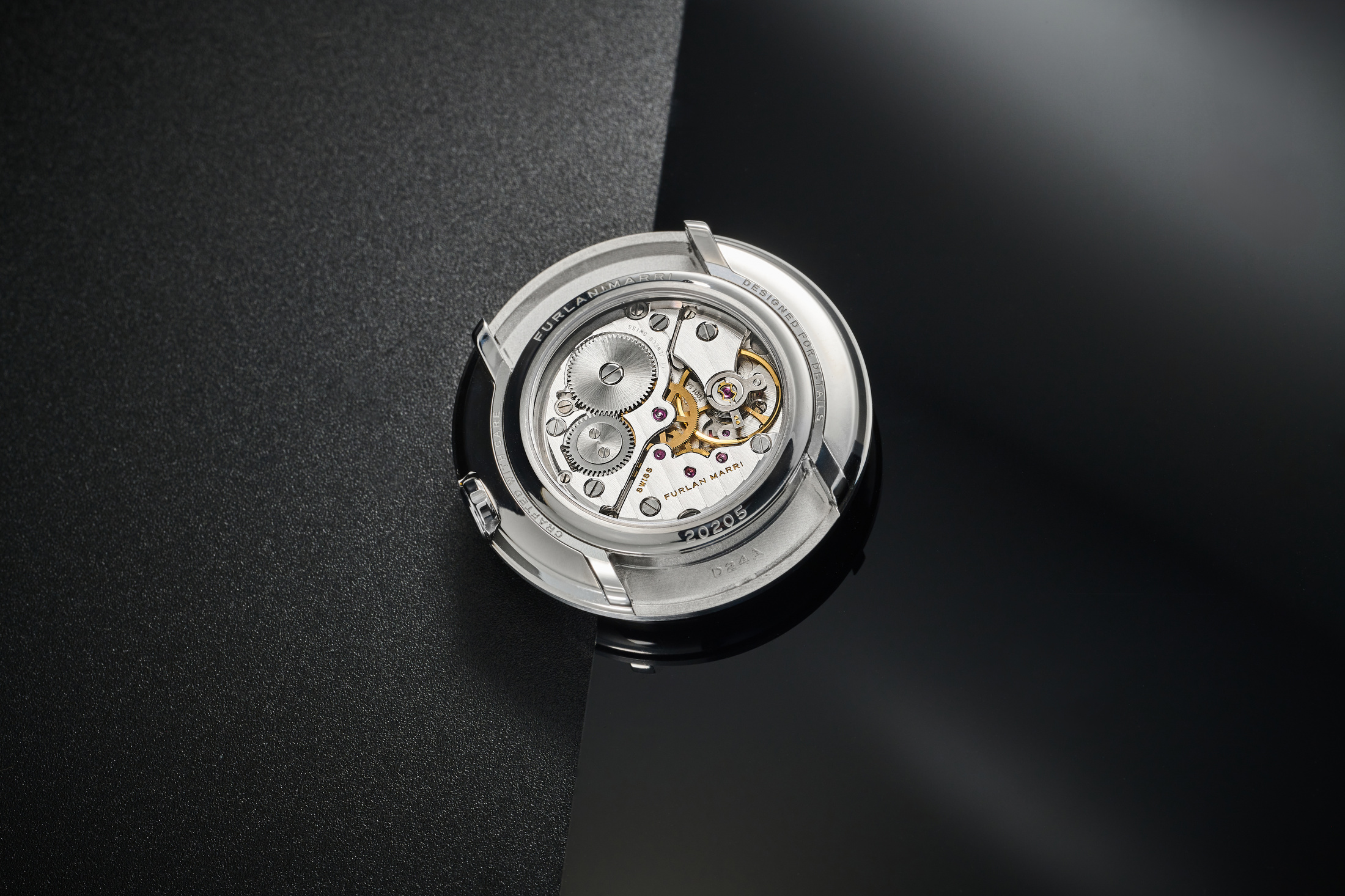
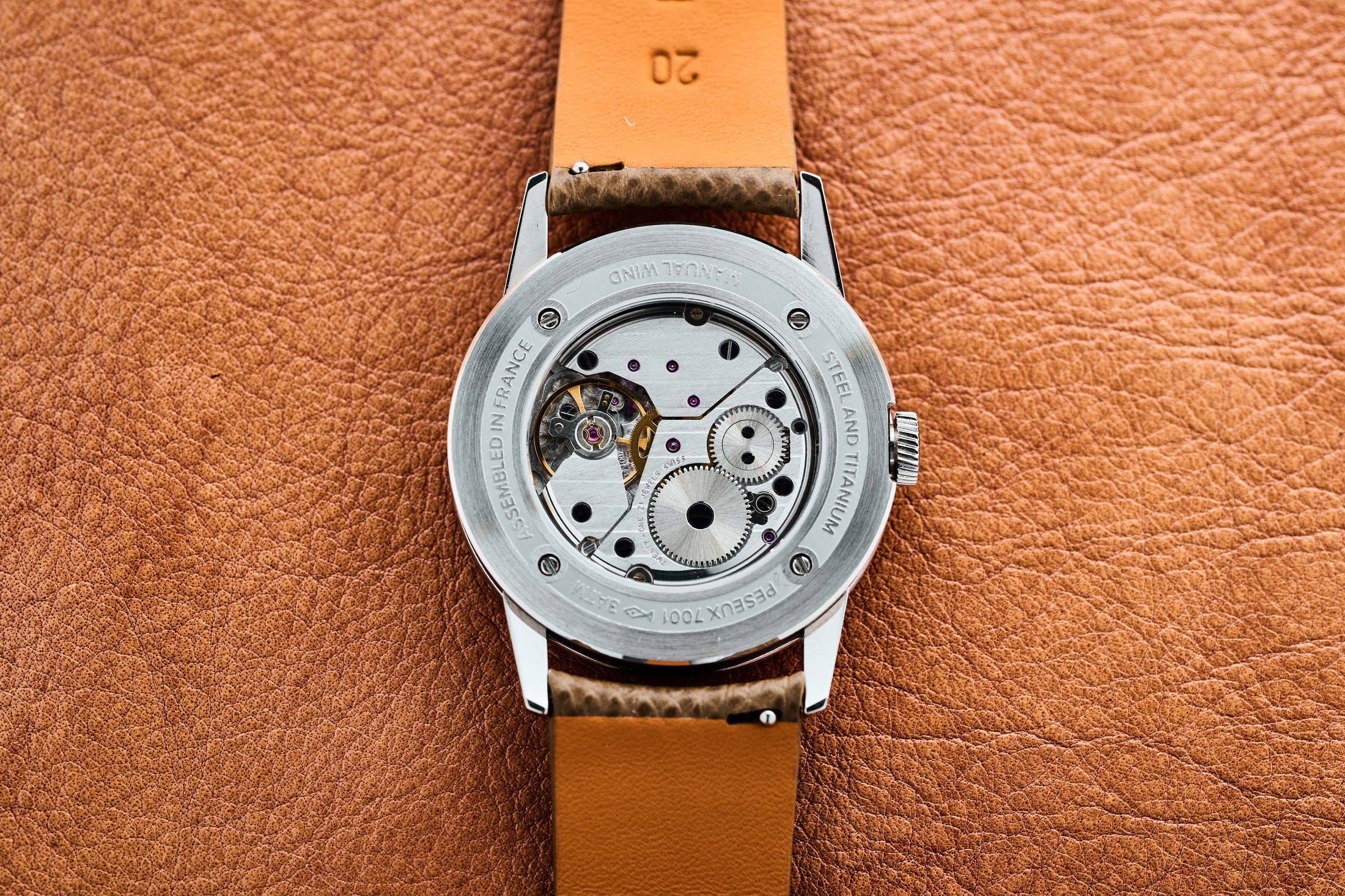
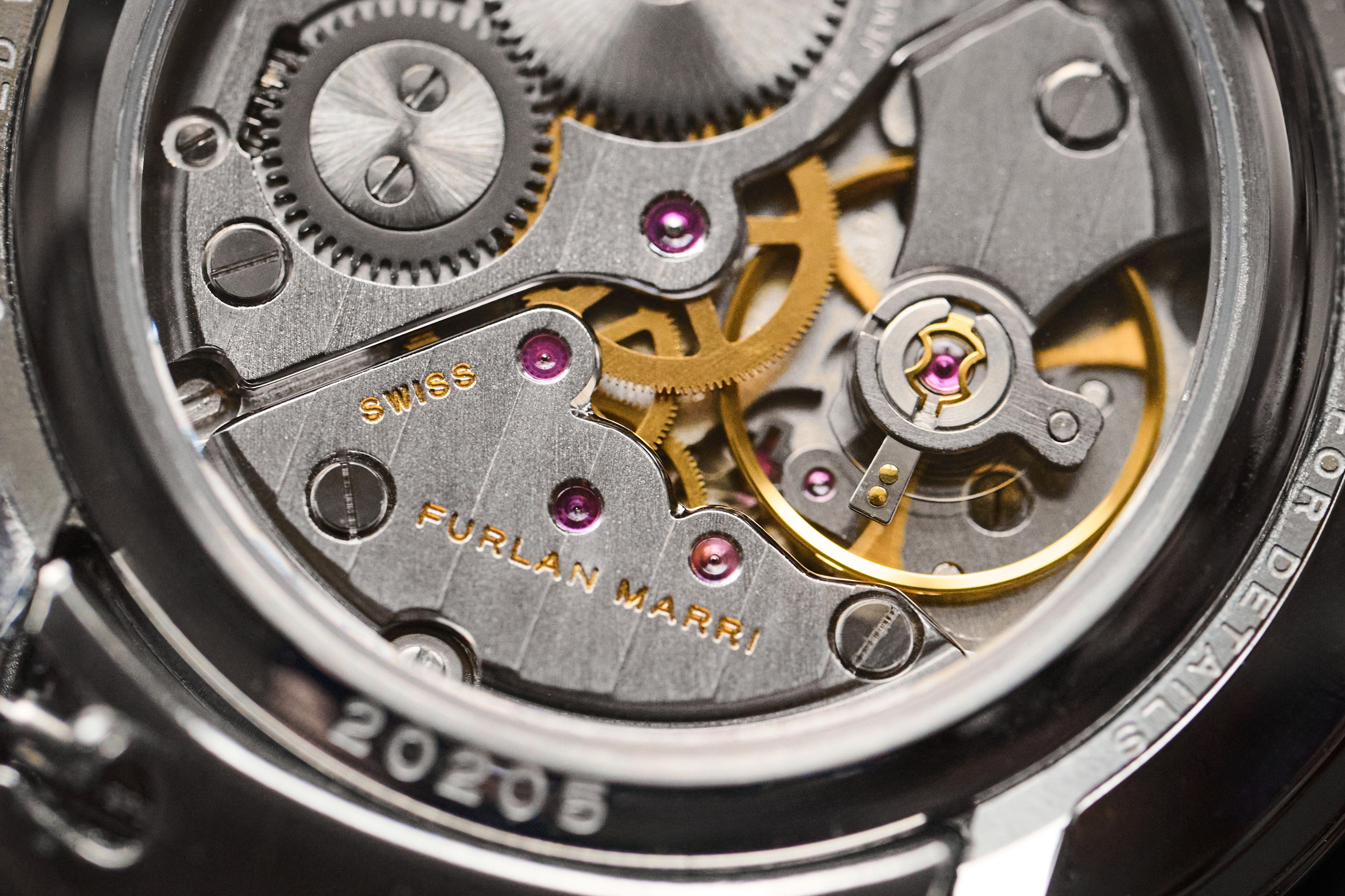
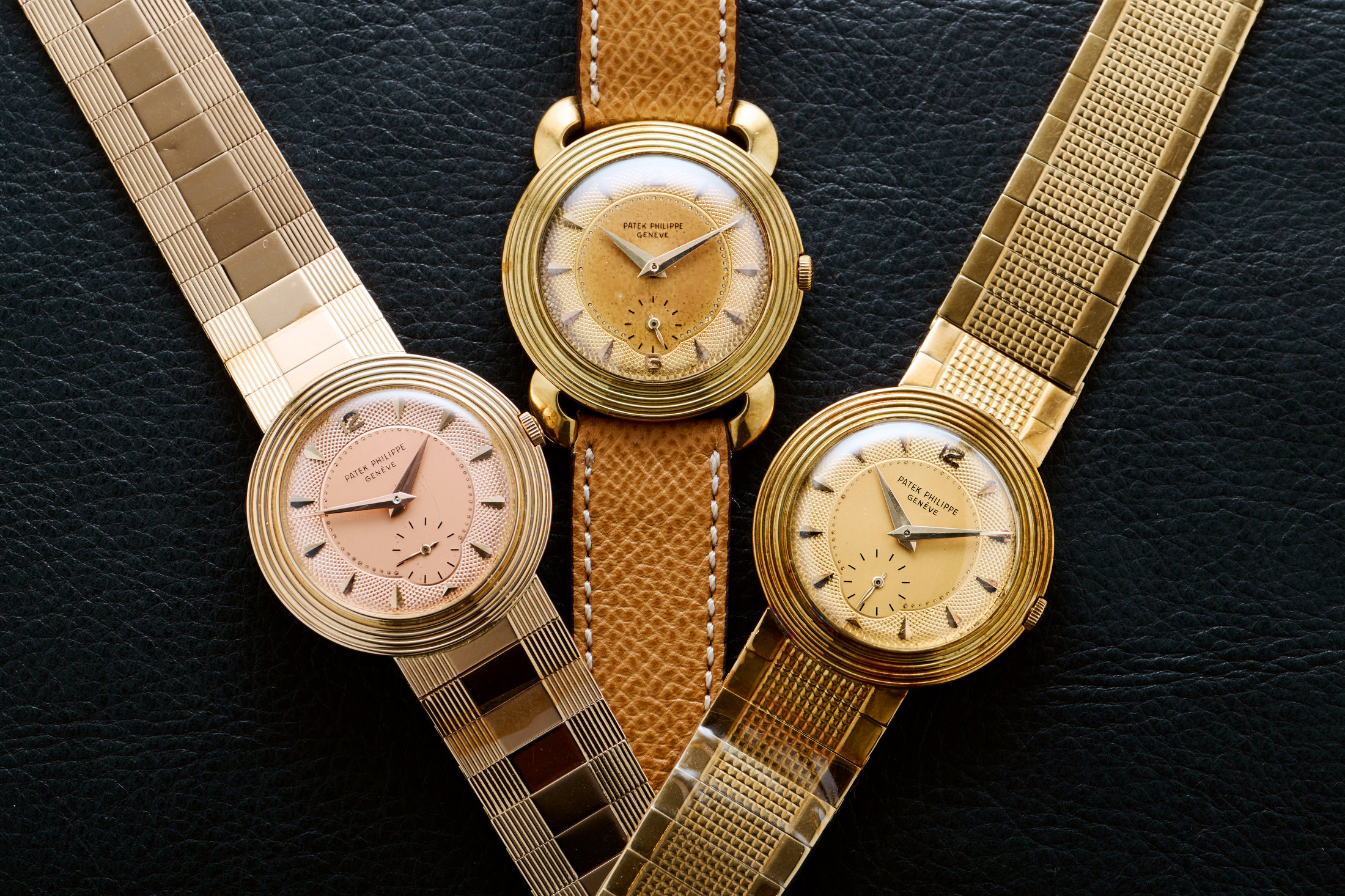
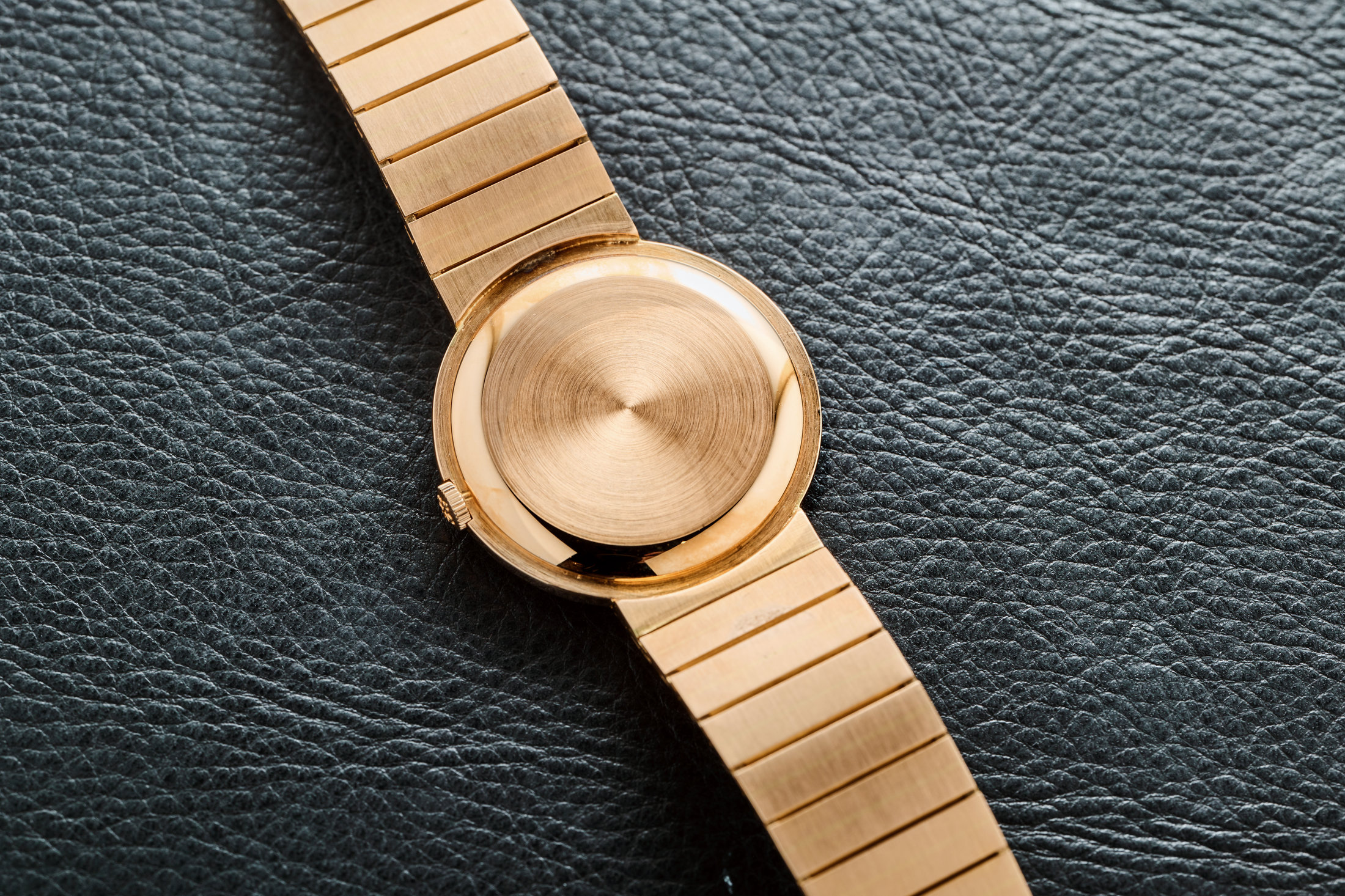
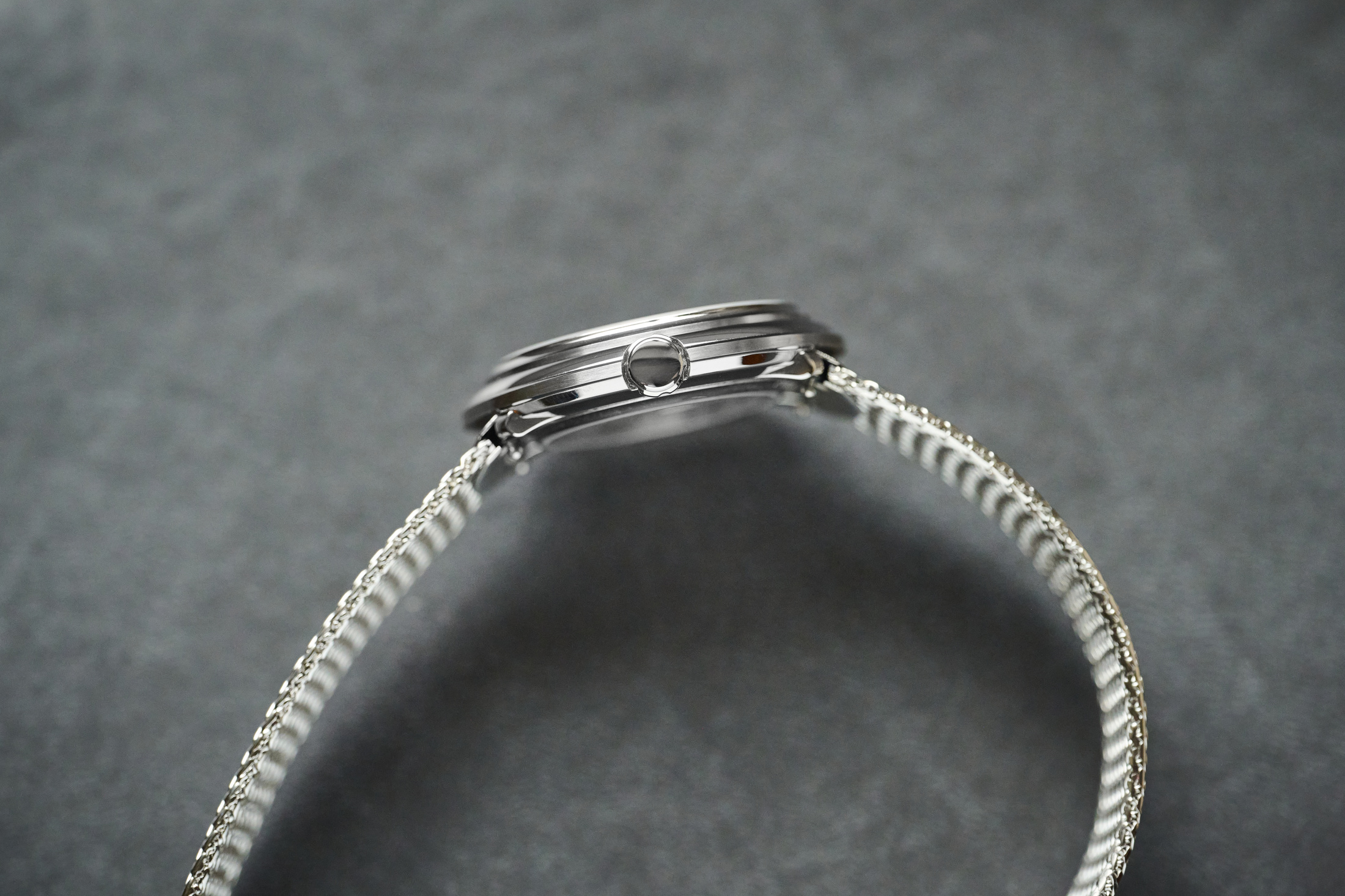
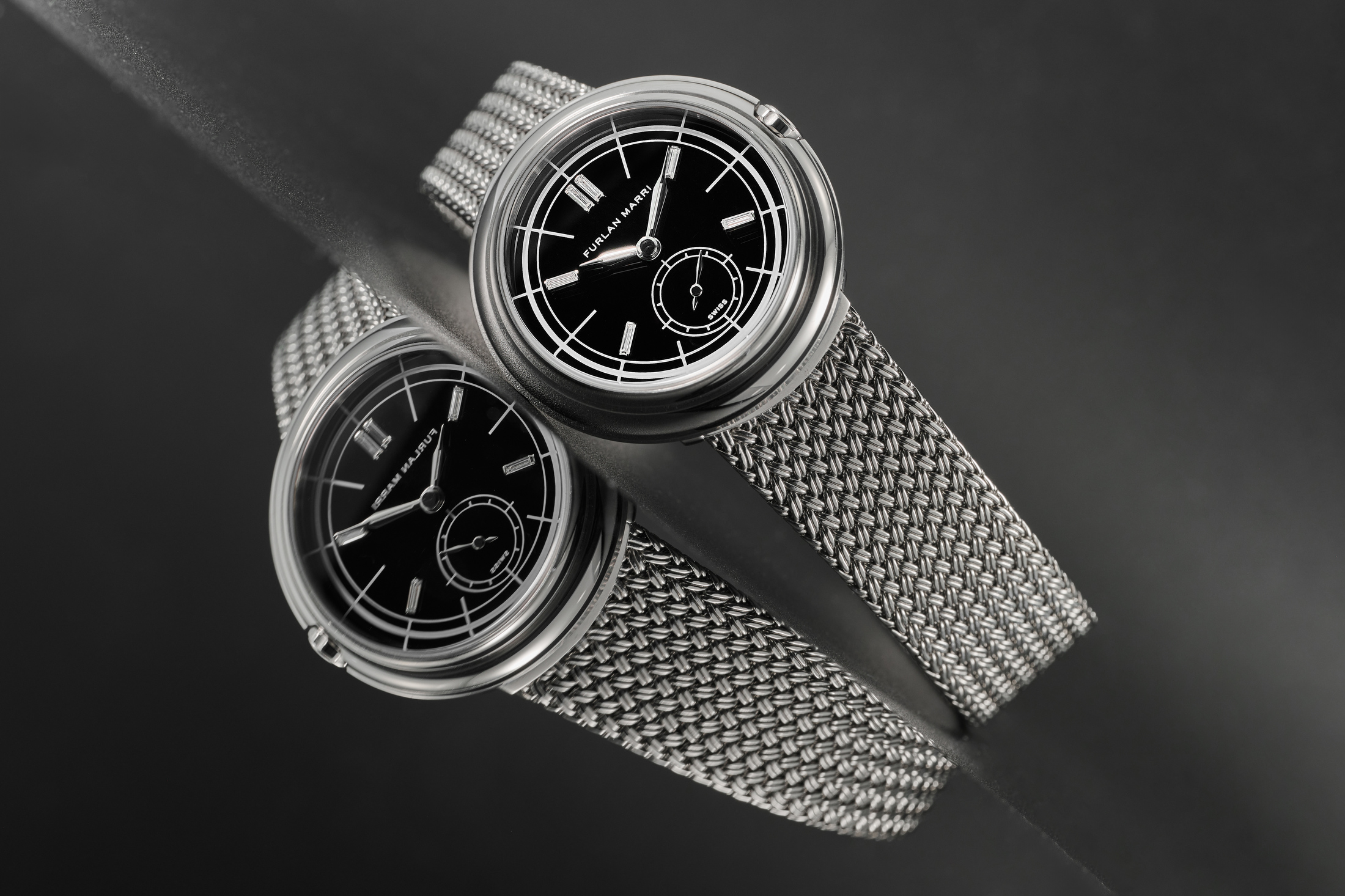
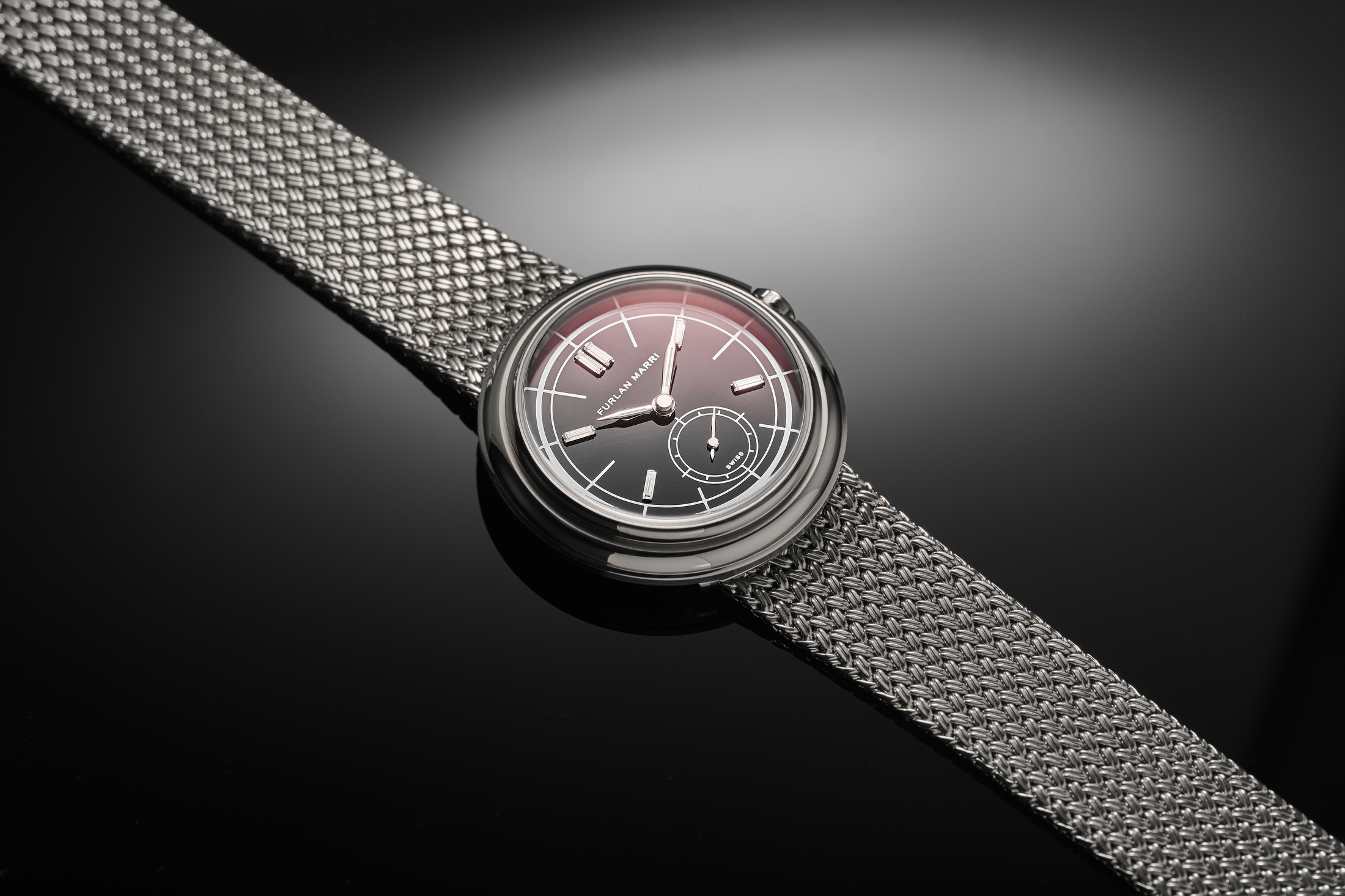
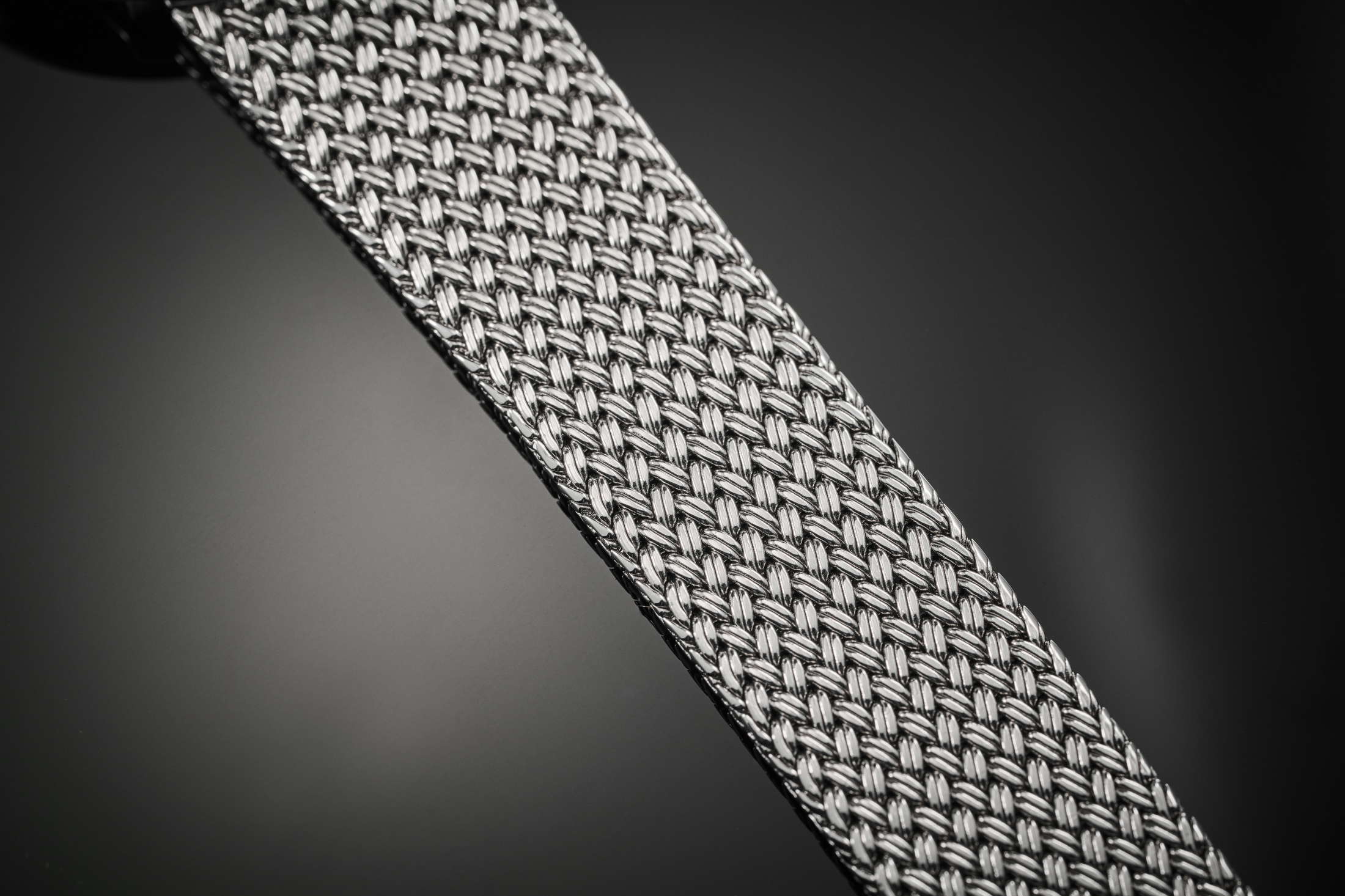

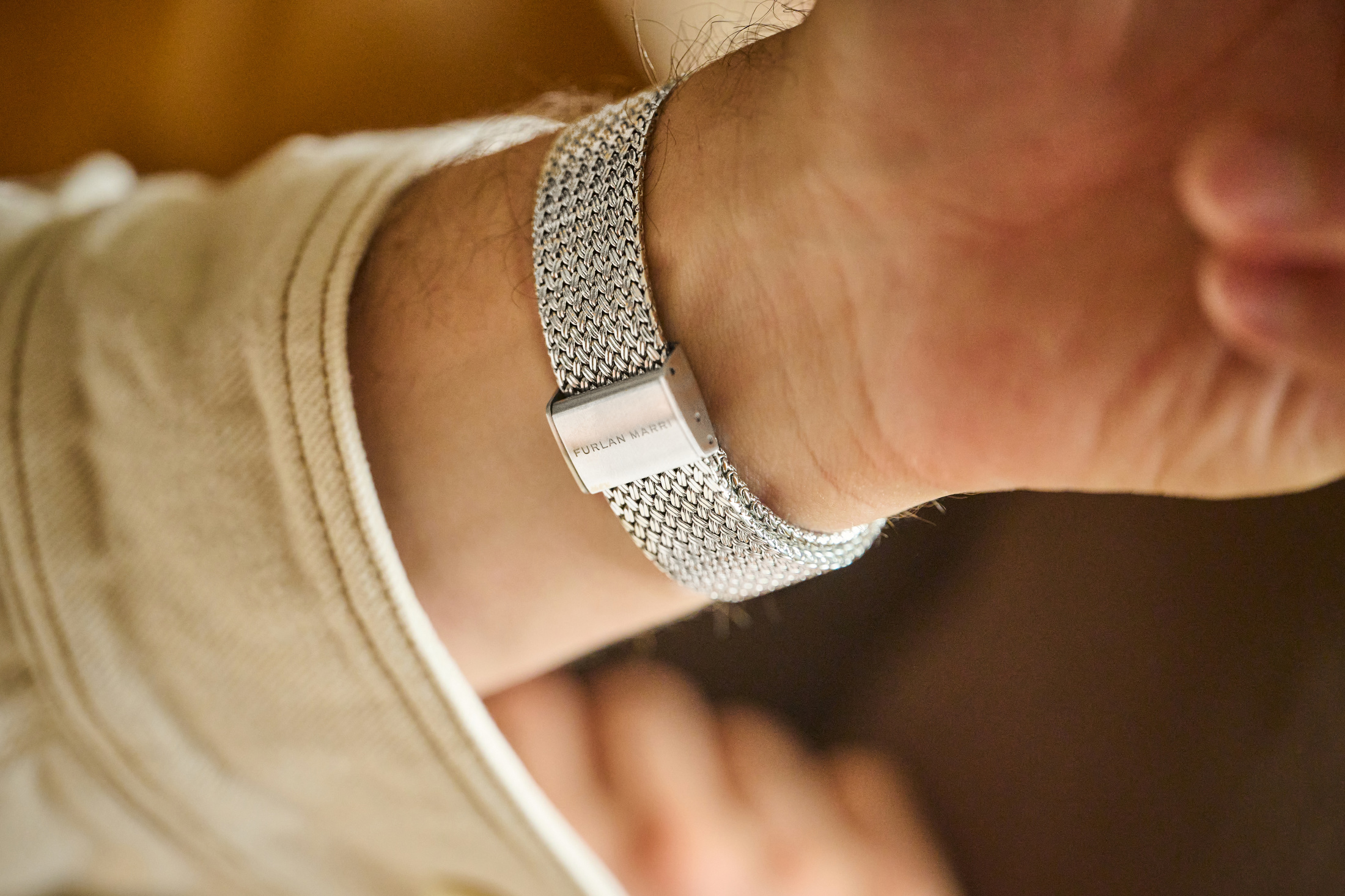
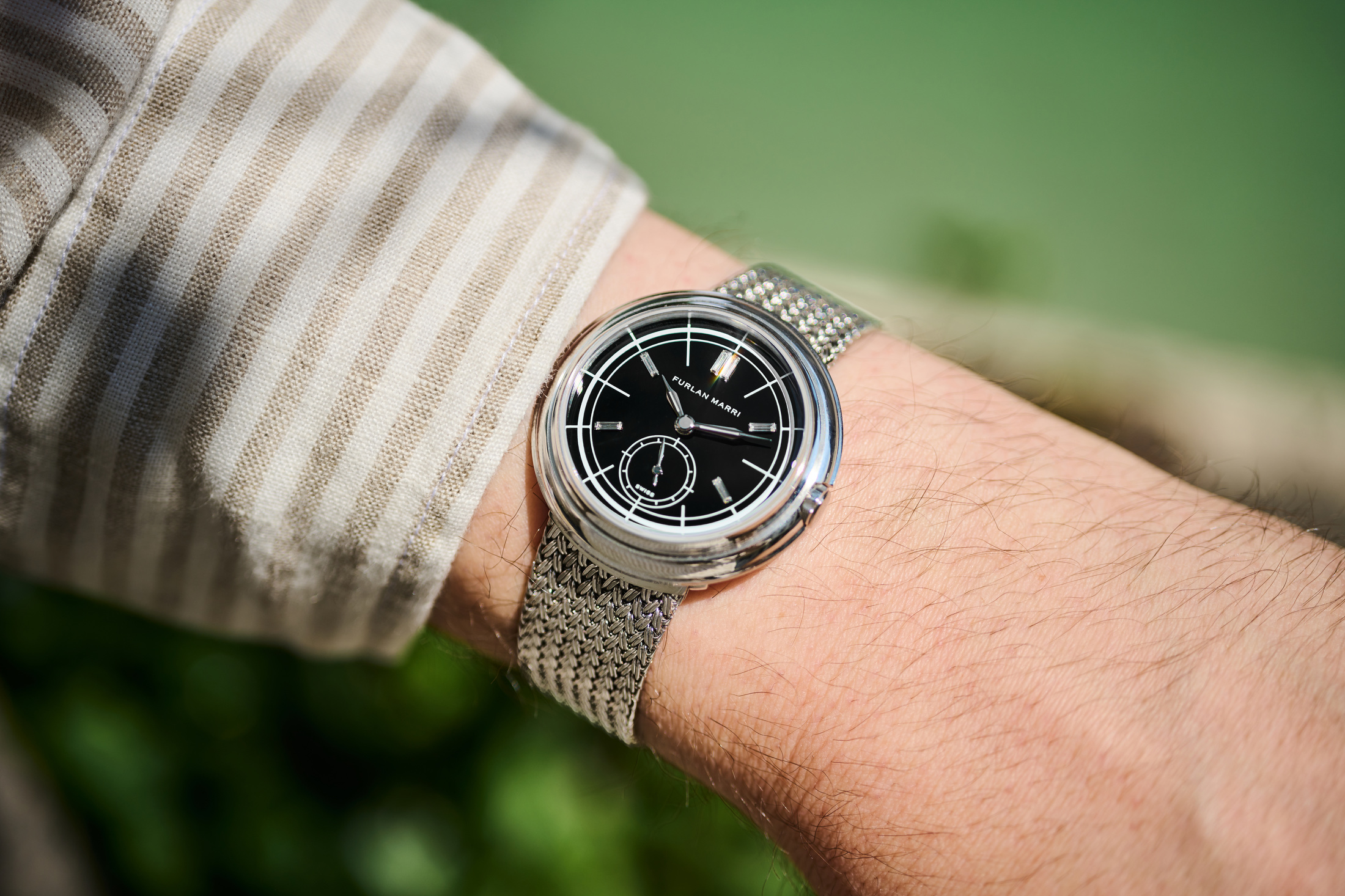
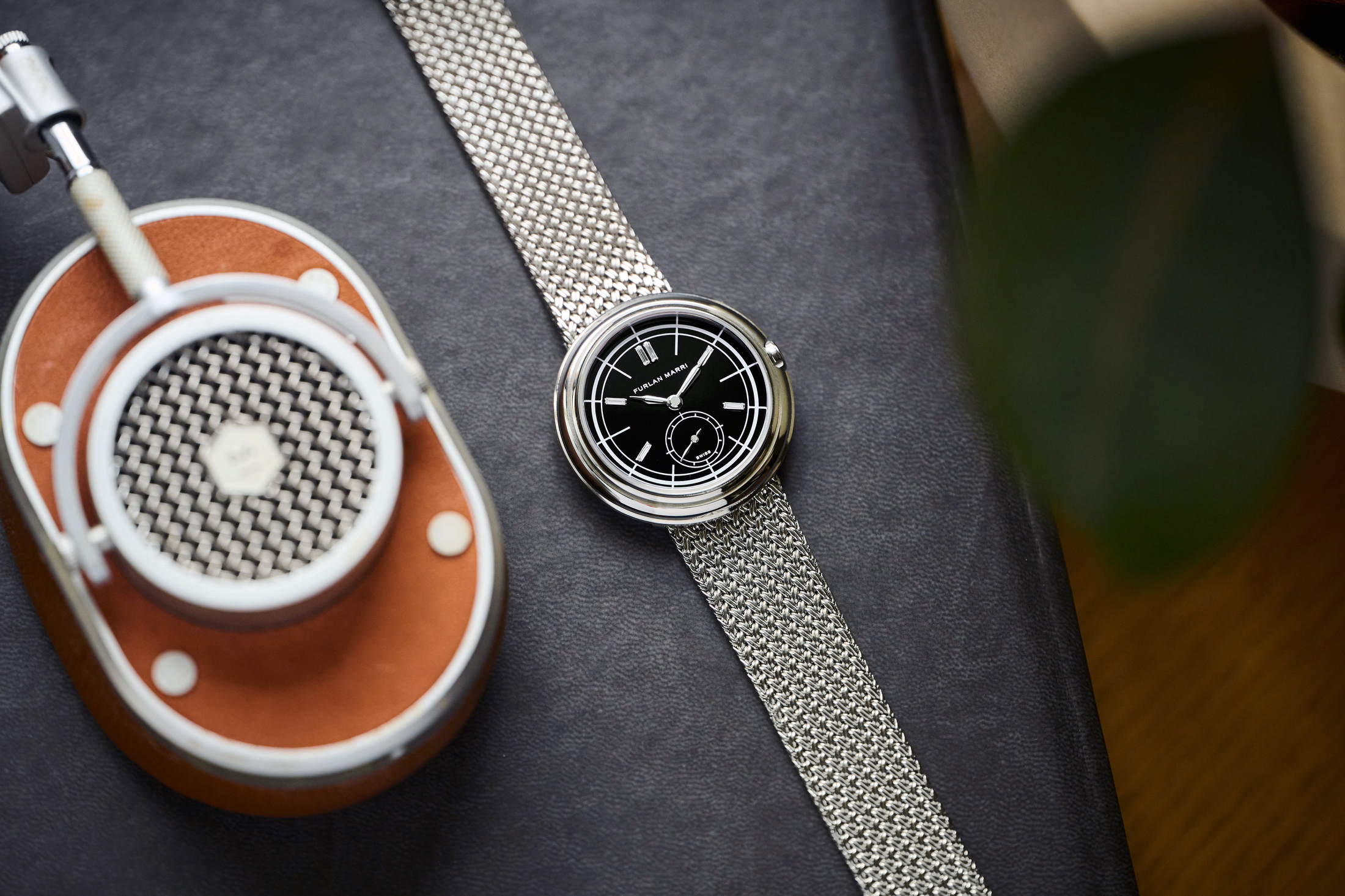
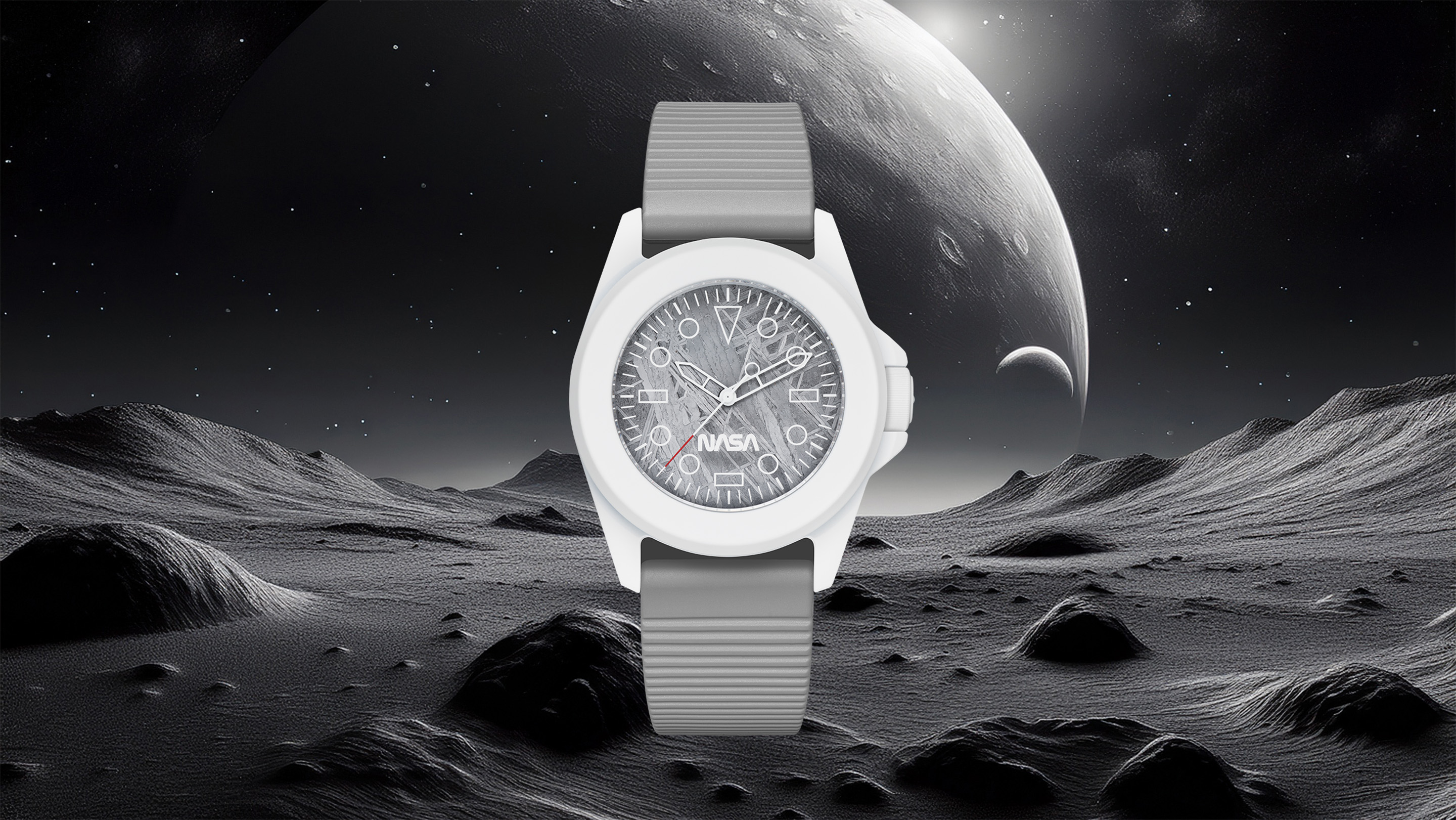
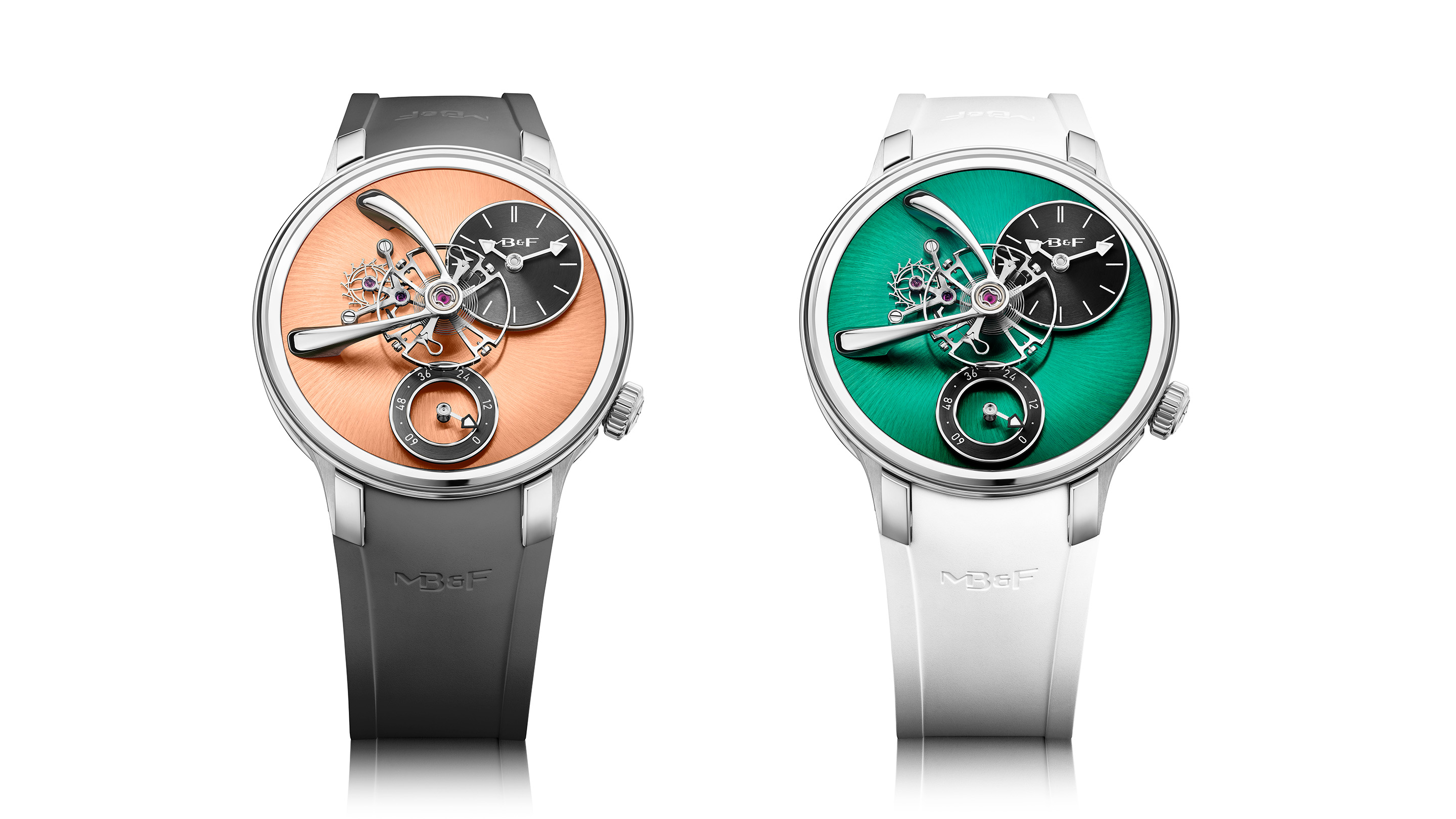
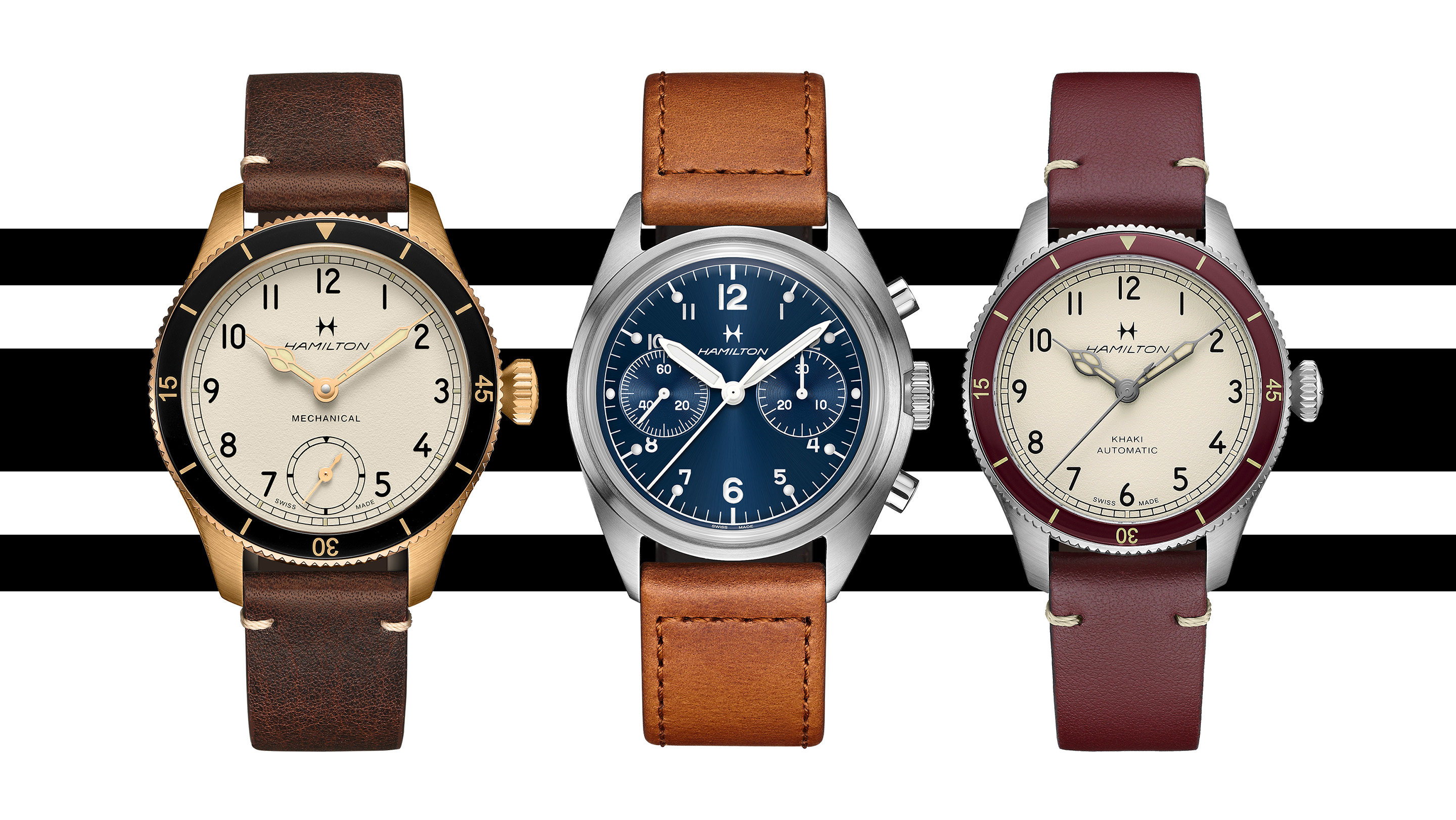

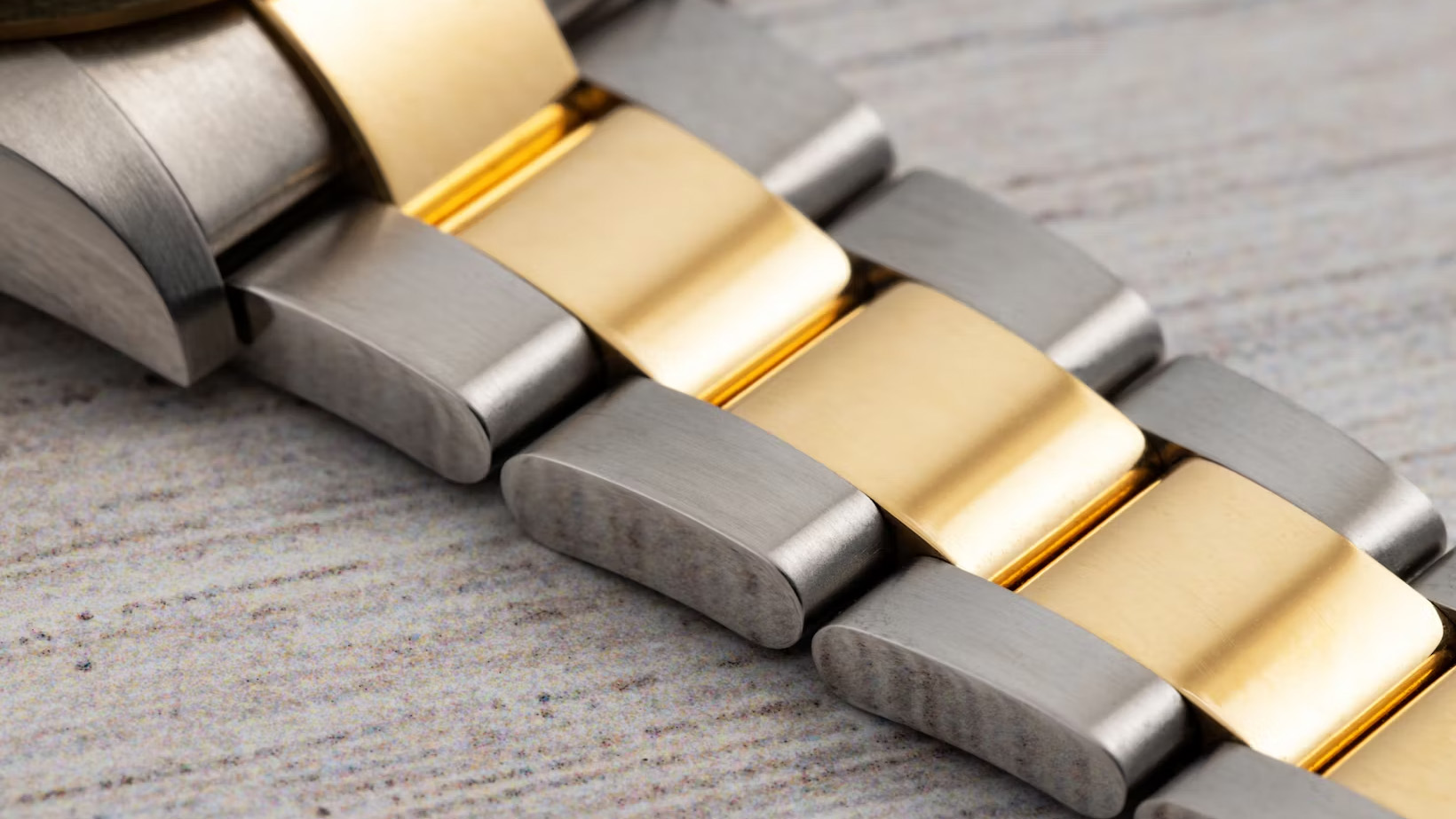
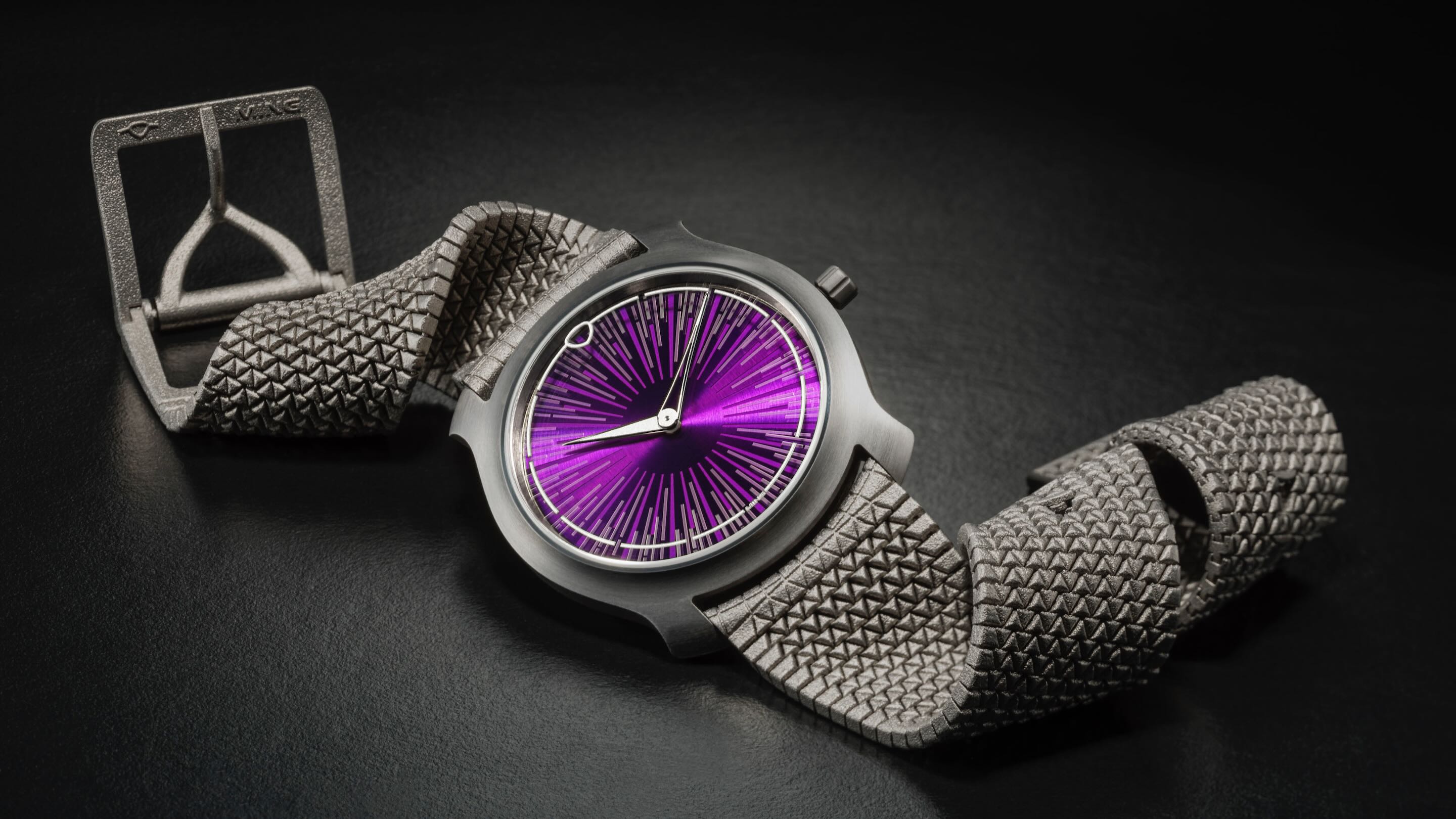
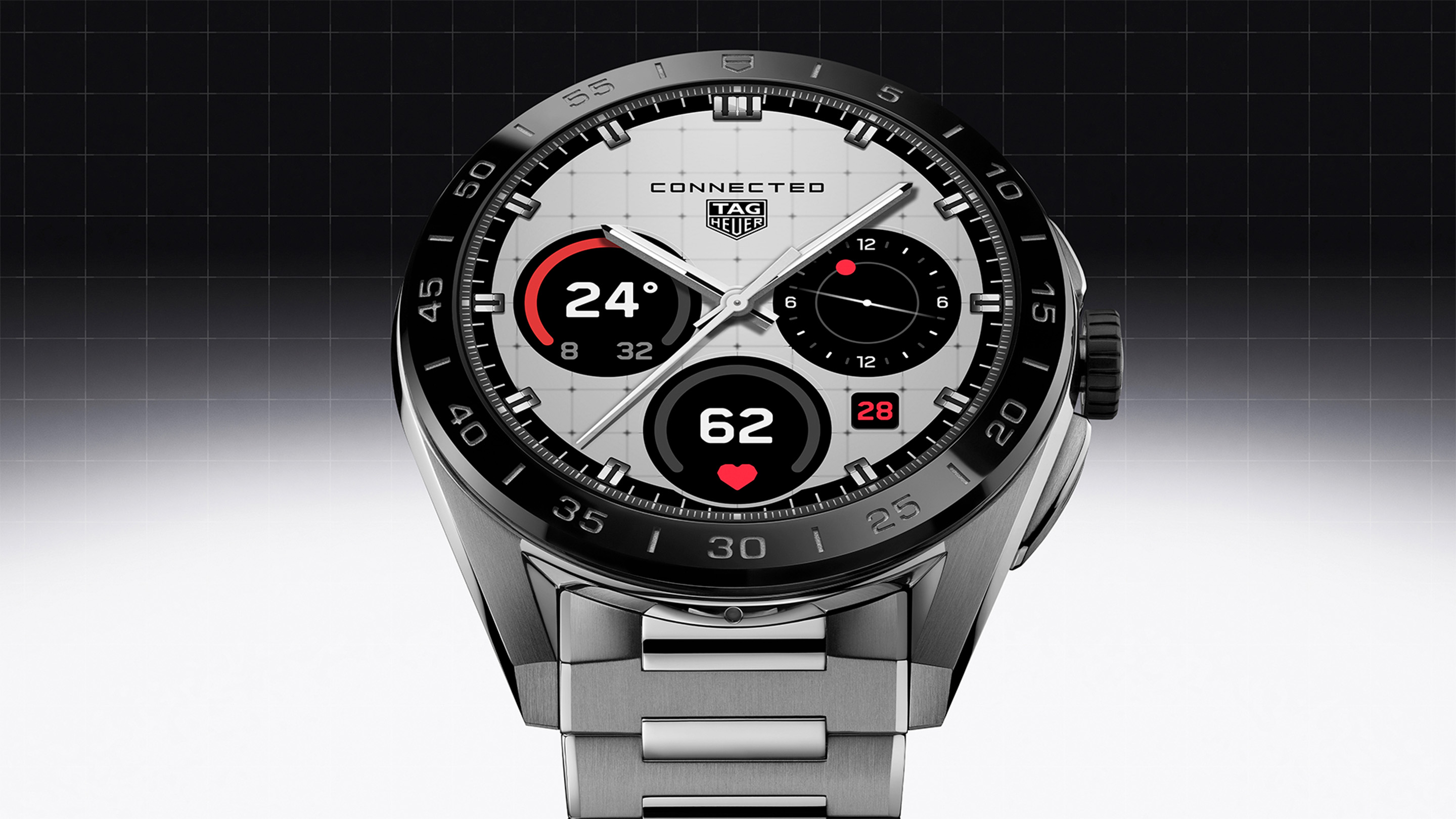
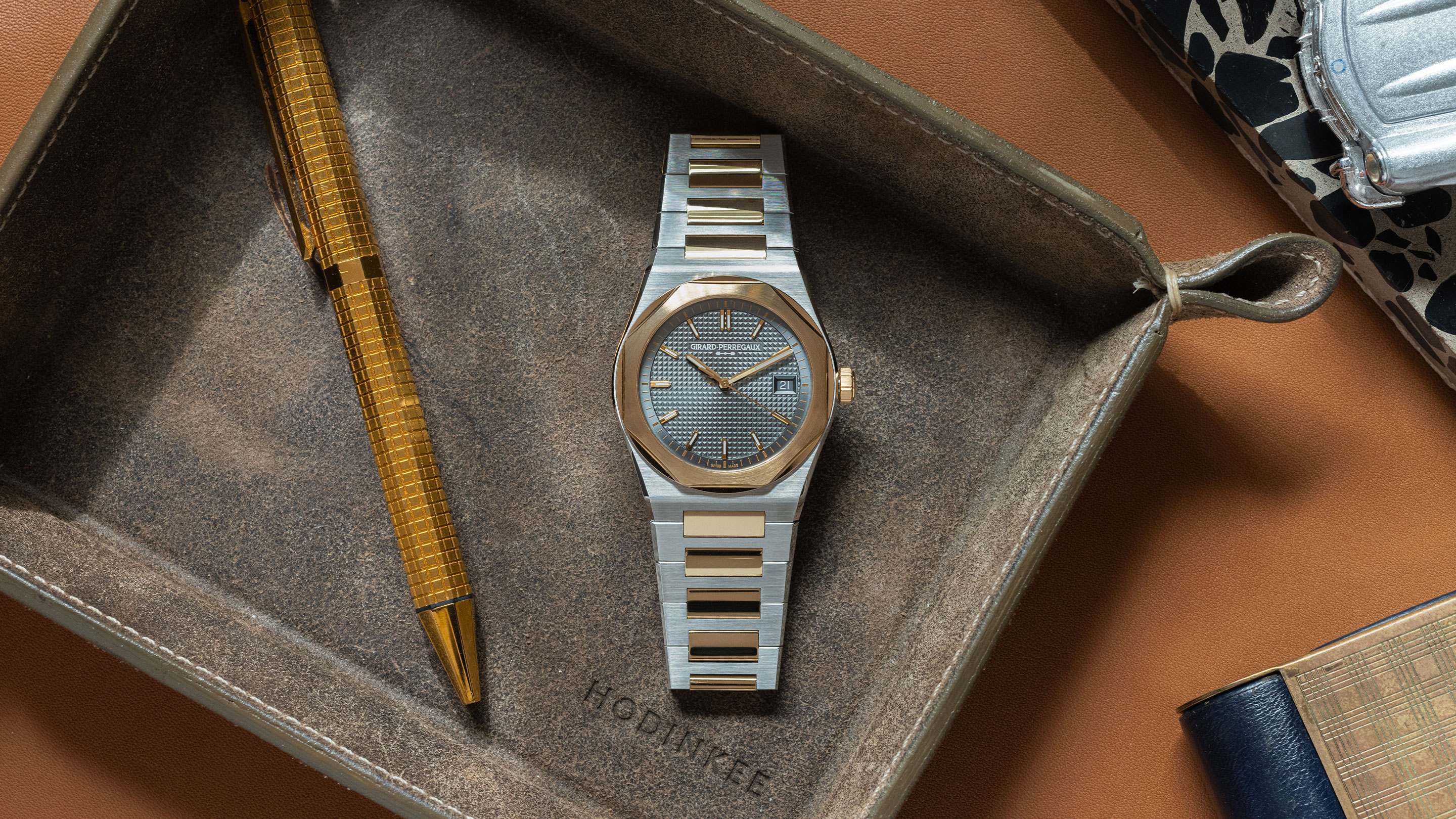
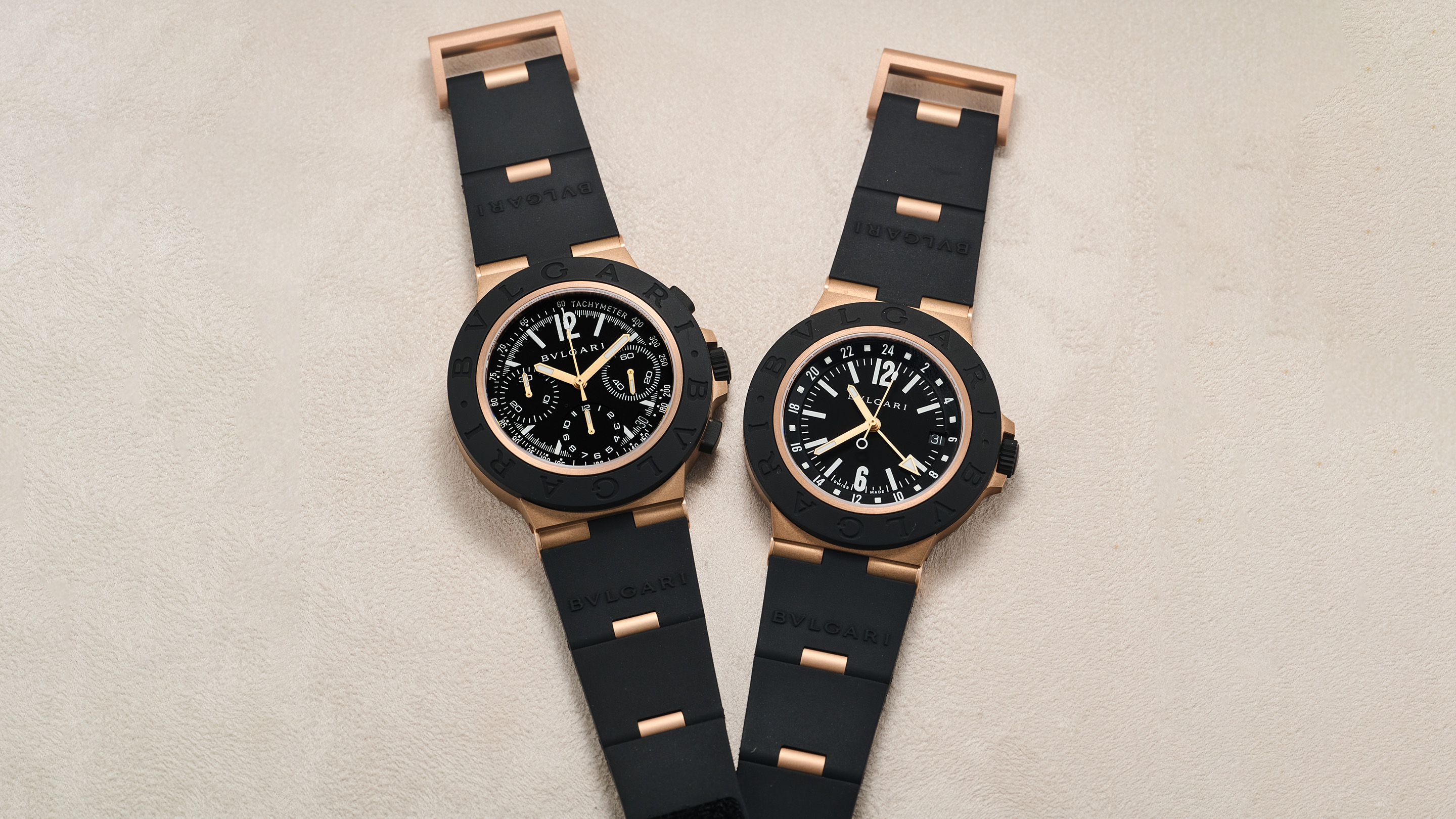
Top Discussions
Breaking NewsA Yellow Gold Rolex ref. 6062 Sets Record for the Reference, Third Most Expensive Rolex Ever Sold, At $6.2 Million
Photo ReportInside Mike Wood’s ‘For Exhibition Only’: A Private Rolex Collection On Limited Display
Reading Time at HSNY: Ex Libris